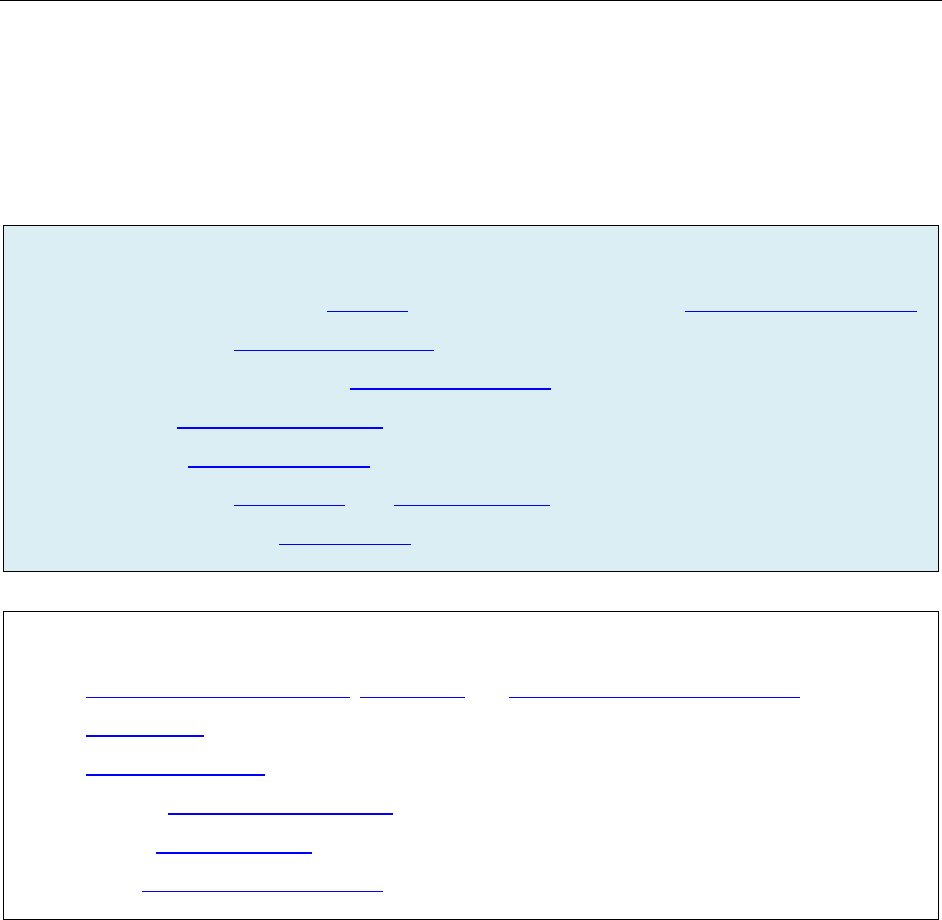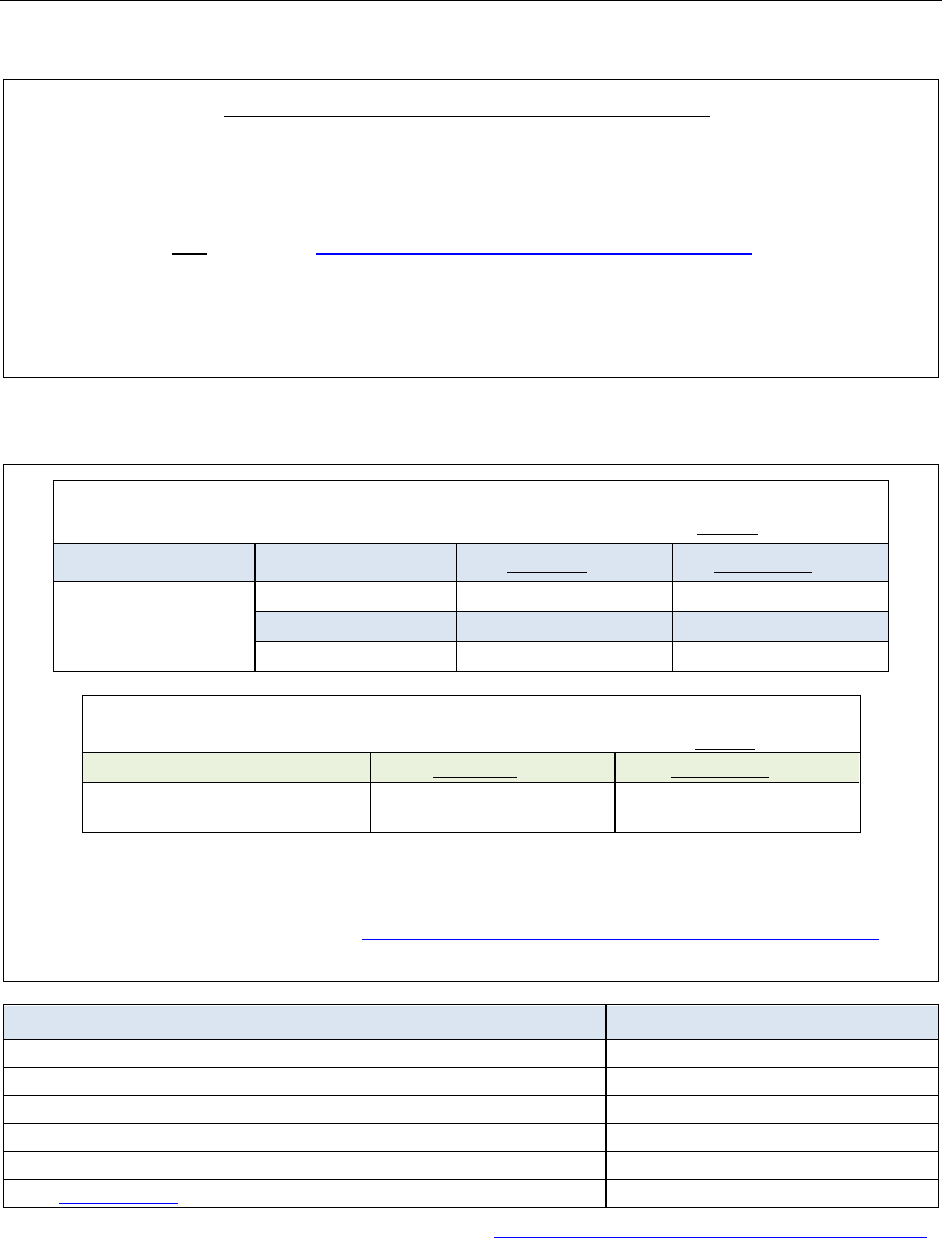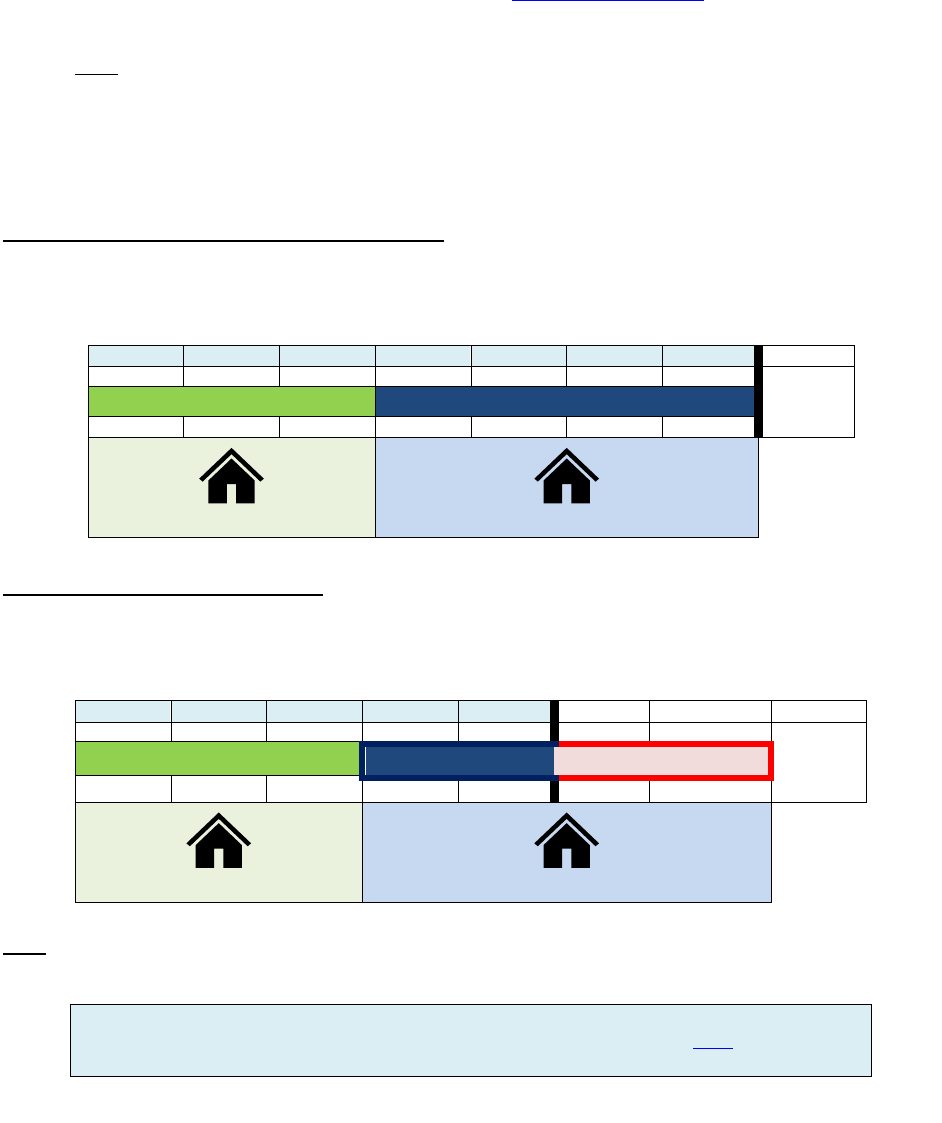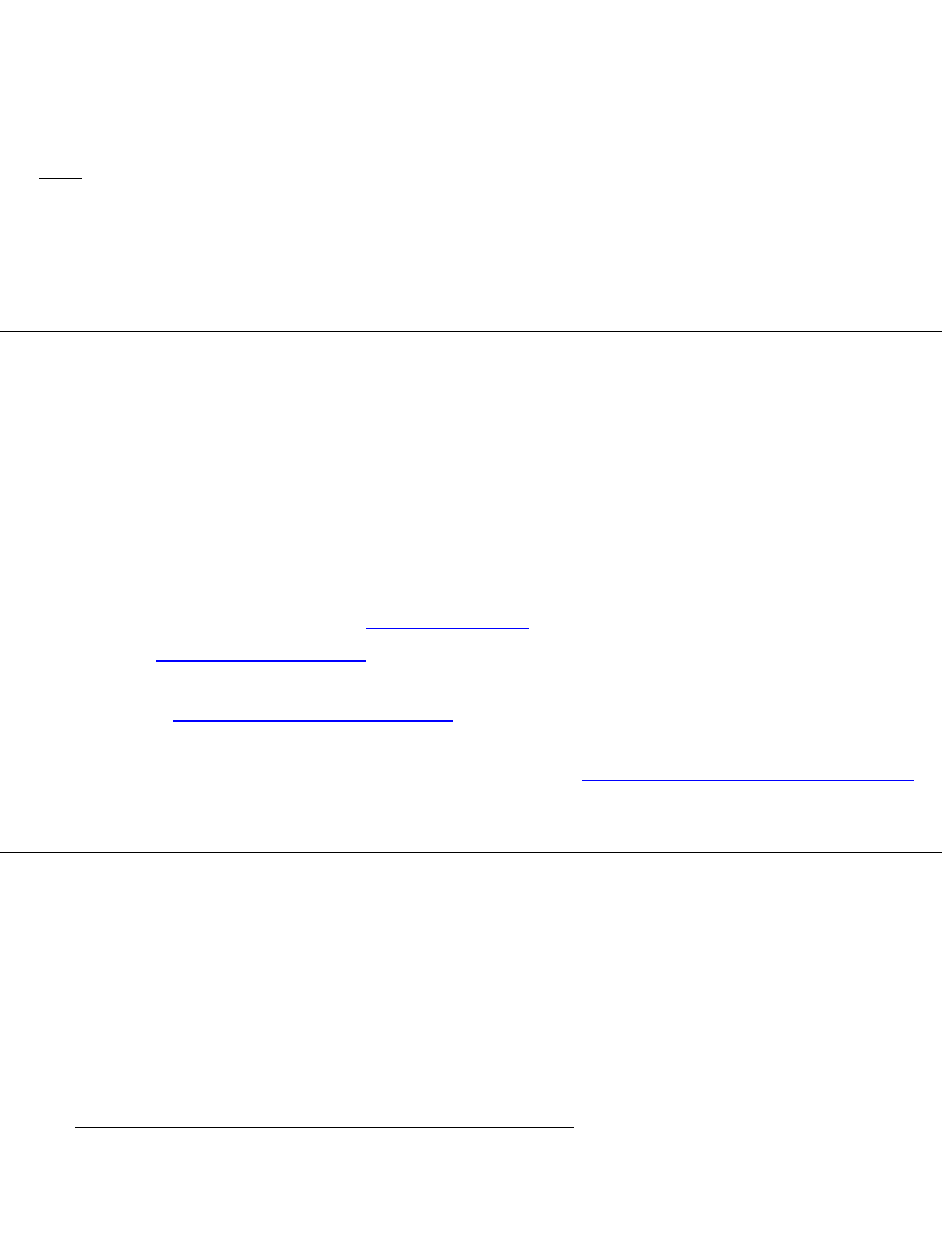
VA Home Loan Guaranty
Buyer’s Guide
Version: April 2022gf
1
Table of Contents
Overview ....................................................................................................................................................... 3
Outline of the VA Homebuying Process ........................................................................................................ 5
Eligibility ........................................................................................................................................................ 6
Before Borrowing .......................................................................................................................................... 9
Beginning the VA Home Loan process .................................................................................................. 9
Some helpful tips: ............................................................................................................................... 10
General Mortgage Costs ..................................................................................................................... 11
Buying a Home with a VA-Guaranteed Loan .............................................................................................. 14
Additional VA Loan Options ........................................................................................................................ 15
Energy Efficient Mortgage (EEM) ........................................................................................................ 15
Alteration and Repair loan .................................................................................................................. 16
Construction Loan ............................................................................................................................... 17
Farm Residence Loan .......................................................................................................................... 19
Loan Assumption ................................................................................................................................. 20
Required Loan Documents .......................................................................................................................... 22
Lender-Required Documents .............................................................................................................. 22
VA-Required Documents ..................................................................................................................... 22
The VA ‘Escape Clause’ ............................................................................................................................... 23
VA Appraisal ................................................................................................................................................ 23
What if my appraisal is below the purchase price? ................................................................................ 24
Home Inspections ....................................................................................................................................... 25
Negotiable items ..................................................................................................................................... 27
At Closing: Buying Your Home .................................................................................................................... 28
Post-Purchase: Mortgage Servicing ............................................................................................................ 29
Escrow Accounts ................................................................................................................................. 29
Appendix A: Military Service Requirements ............................................................................................... 31
Veterans and Active Duty Service members ....................................................................................... 31
National Guard and Reserve members ............................................................................................... 31
Exceptions to minimum service requirements ................................................................................... 32
Other Than Honorable, Bad Conduct, or Dishonorable discharges .................................................... 32
Appendix B: Certificate of Eligibility (COE) .................................................................................................. 33
How to apply for a COE ........................................................................................................................... 33
Proof of Service Requirements ............................................................................................................... 33
Character of Service (COS) Requirements .............................................................................................. 34
Notes on Reserve and National Guard COS requirements ................................................................. 35
Upgrading discharge status ................................................................................................................. 35
Appendix C: Funding Fee Tables ................................................................................................................. 36
Appendix D: Reusing the VA Loan ............................................................................................................... 37
Re-using your VA Loan benefit (Restoring Entitlement) ..................................................................... 37
Buying Another Home (Remaining Entitlement) ................................................................................ 37
Appendix E: Eligible Spouses ....................................................................................................................... 40
How to apply for Dependency and Indemnity Compensation (DIC): ................................................. 41
Surviving Spouses applying for VA Home Loan eligibility: .................................................................. 41
Appendix F: Native American Direct Loan (NADL) Program ....................................................................... 43
NADL Eligibility .................................................................................................................................... 43
Appendix G: How to Avoid Foreclosure ...................................................................................................... 45
2
If You Cannot Make Payments on the Due Date?............................................................................... 45
What If I Experience Financial Troubles? ............................................................................................ 46
Beware of the "Dotted Line" ............................................................................................................... 46
Appendix H: FAQs and Common Issues ...................................................................................................... 48
Appendix I: Terms and Definitions .............................................................................................................. 50

3
Overview
Created by the original G.I. Bill (Servicemen’s Readjustment Act of 1944), the VA-Guaranteed Home Loan
program has helped generations of Veterans, Servicemembers, and their families enjoy the dream of
homeownership and the opportunity to retain their homes in times of temporary financial hardship.
Should you have any questions about the VA Home Loan benefit or issues with your current home loan,
feel free to contact us at: 1-877-827-3702.
What is the VA Home Loan ‘Guaranty’?
The VA home loan guaranty is an agreement that VA will reimburse a lender (such as banks, credit
unions, mortgage companies, etc.) in the event of loss due to foreclosure. This guaranty takes the place
of your down payment.
Who is eligible for a VA Home Loan?
Active-duty servicemembers and Veterans with discharges other than dishonorable, National Guard and
Reserve service members and Veterans with an honorable discharge, certain eligible spouses, and other
uniformed service personnel may be eligible for VA home loan guaranty benefits. The full listing is
available online at: https://www.va.gov/housing-assistance/home-loans/eligibility/.
Is there a fee to use the VA Home Loan Guaranty?
Yes, but the funding fee can be waived (see list below). To keep the program viable, Congress instituted
a program funding fee, which is a percentage of the total loan amount. This user fee varies based
whether the loan is a first-time or subsequent (second, third, etc.) use of the benefit. The funding fee
may be paid in cash or included in the loan at closing.
*The funding fee can also be paid by the seller, lender, or any other party on your behalf. (See
Chapter 8 of the Lenders Handbook)
The following individuals do not pay the VA funding fee:
• Veterans receiving VA compensation for a service-connected disability.
• Veterans entitled to receive VA compensation for a service-connected disability, but receive
retirement pay or active service pay.
• Unremarried surviving spouses of Veterans who died in active service or from a service-
connected disability.
• Service member with a proposed or memorandum rating from VA, prior to loan closing, as
eligible to receive compensation as a result of a pre-discharge claim.
• Service member on active duty who provides, on or before the date of loan closing, evidence of
having been awarded the Purple Heart.
Is there a limit to the size of a VA-backed mortgage?
There are no loan limits if one has full home loan benefit or full entitlement. If you are a first-time
homebuyer or have sold your previous VA-backed home and paid your loan in full, you can enjoy VA-
backing on a home loan regardless of home price and without the need for a down payment.
1
Of
course, you must be able to afford the home and the property must appraise for at least the purchase
price, otherwise you may have to make a small down payment.
1
Blue Water Navy Vietnam Veterans Act of 2019, https://www.congress.gov/bill/116th-congress/house-
bill/299/text

4
Note: For loans made prior to 2020 that exceeded the Freddie Mac conforming loan limit, lenders
required borrowers to pay a down payment for the loan amount above the county loan limit.
What if I want to buy a home while I still have another VA Home Loan?
While you can buy a home for any loan amount, you must either sell your previous home or understand
VA rules on subsequent purchases and remaining entitlement. Those who purchase a subsequent home
without selling their previous VA-guaranteed home will continue to follow their county conforming loan
limit for the VA loan guaranty. This may mean a down payment on any amount above the loan limit.
Note: You must be able to afford all your VA loans at the same time and the subsequent home must
become your residence. (See Appendix D: Reusing the VA Loan below or this blog)
Why choose VA?
The VA Home Loan is often the best home loan product for Veterans. Some benefits include:
• No down payment as long as the sales price is at or below the home’s appraised value (the
value set for the home after an expert review of the property) See VA Appraisal section below
• No loan limit with full entitlement if you can afford the loan, VA will back loans in all areas of
the country, regardless of home price.
• Competitive terms and interest rates from private banks, mortgage lenders, or credit unions
• No need for private mortgage insurance (PMI) or mortgage insurance premiums (MIP)
o PMI is a type of insurance that protects the lender if the borrower ends up not being
able to pay the mortgage. It’s usually required on conventional loans if the down
payment is less than 20% of the total mortgage amount.
o MIP is what the Federal Housing Administration (FHA) requires borrowers to pay to self-
insure an FHA loan against future loss.
o Not having to pay PMI could save a borrower on their monthly mortgage payment
• Fewer closing costs, which may be paid by the seller, lender, or any other party
• No penalty fee for paying off the loan early
• Access to VA loan staff who can answer questions by mail or phone (1-877-827-3702). (Contact
information is online at: https://www.benefits.va.gov/homeloans/contact_rlc_info.asp)
See more frequently asked questions in Appendix H: FAQs and Common Issues.

5
Outline of the VA Homebuying Process
Buying a home can seem intimidating to first-time homebuyers. The intent of this guide is to help
alleviate some of that stress by giving you the information you’ll need to make the decisions right for
you.
This guide is organized to explain the general VA homebuying process in a linear fashion. You can start
with VA – from starting the home shopping through what do if you need to avoid foreclosure in the
future.
What you need to know when buying a home with the VA home loan:
• Verify your VA Home Loan eligibility (or if you meet the criteria for surviving spouse eligibility)
• Learn about the basics of home-buying before you shop around
• Apply for your VA home loan Certificate of Eligibility (or apply through your lender)
• Know the additional loan options for VA home loans
• Gather the required documents to provide to your lender
• Learn about the VA appraisal and ‘VA Escape Clause’
• Some things to know after you close on your loan
Additional sections of this document include:
• Military service requirements, exemptions and other than honorable discharges
• Funding Fees
• Reusing the VA loan
• Who are eligible surviving spouses
• How to avoid foreclosure
• Some frequently asked questions

6
Eligibility
Based on your service to the country, you may be eligible for the VA Home Loan benefit. VA is the only
organization that can determine eligibility for a VA direct or VA-backed home loan benefit based on your
length of service or service commitment, duty status, and character of service. Details for determining
eligibility (including calculating credible years of service) can be found in Chapter 7 of the M26-1
Guaranteed Loan Processing Manual.
Lenders’ Borrowing Requirements:
You must meet your lender’s minimum or standards of credit, income, and any other requirements to
approve a loan. VA does NOT require a minimum credit score, but most lenders will use a credit score to
help determine your interest rate and to lower risk. Typically, lenders may want borrowers to have a
minimum credit score.
Because different lenders have different requirements, feel free to shop around for a lender that meets
your financial and homebuying needs.
VA’s Borrowing Requirements:
VA does not determine how much you can borrow. However, unlike other loans, VA requires you to
have enough income remaining after paying your mortgage and other financial obligations. This helps
ensure you can afford homeownership and lessen the risk of defaulting on your loan.
Also, you must:
1) live in the home being bought with the loan, and
2) meet ONE of the following:
Active-Duty Servicemember: Currently on active duty and have served at least 90 continuous days.
Note: Active duty includes Active Guard Reserve (AGR) members activated under Title 10 U.S.C.
Veteran: Veterans separated from active duty between August 2, 1990 and the present (Gulf War era)
must have served:
• 24 continuous months, or
• A full period (at least 90 days) for which you were called or ordered to active duty, or
• At least 90 days if discharged for a hardship, a reduction in force, or for convenience of the
government, or
• Less than 90 days (if discharged for a service-connected disability)
Note: This includes Reserve and National Guard members called to active duty for at least 90 days.
Active duty does not include active duty for training.
NATIONAL GUARD on Active-duty:
• At least 90 days of non-training active-duty service (shown on DD214 for the activation or
any other documents to support the activation), OR
• At least 90 days of active service including at least 30 consecutive days (shown as 32 USC
sections 316, 502, 503, 504 or 505 activation on your DD214, annual point statements,
DD220 with accompanying orders, or any other documents to support the activation)
RESERVE on Active-duty:
• At least 90 days of non-training active-duty service (shown on DD214 or any other
documents to support the activation)

7
A full listing of length of service requirements for other eras is located here.
Reserve / National Guard Service member: If not otherwise eligible (e.g., with prior active duty or
Title 10 or Title 32 service listed under the ‘Veteran’ section above), this includes those currently serving
in the Selected Reserve or National Guard (member of an active unit, attending required weekend drills,
and two-week active duty for training). You must complete a total of six credible years and ONE of the
following:
• Continue to serve in the Selected Reserve.
• Serve as Active Guard Reserve (AGR).
• Placed on the retired list.
• Transferred to the Standby Reserve or an element of the Ready Reserve other than the Selected
Reserve after service characterized as honorable service.
Note: AGR Service members (on Title 32 U.S.C. orders) and Individual Mobilization Augmentee
(IMA) Service members must meet the 6-year requirement. Periods of Inactive Ready Reserve (IRR)
service are NOT creditable toward the 6-year requirement.
Reserve / National Guard Veteran: If not otherwise eligible (see ‘Veteran’ section above), you must
have completed a total of six credible years in the Selected Reserve or National Guard (member of an
active unit, attended required weekend drills and two-week active duty for training) and ONE of the
following:
• Discharged with an honorable discharge, or
• Placed on the retired list, or
• Were transferred to the Standby Reserve or an element of the Ready Reserve other than the
Selected Reserve after service characterized as honorable service.
Note: Periods of Inactive Ready Reserve (IRR) service are NOT creditable toward the 6-year
requirement Individuals who completed less than six years may be eligible if discharged for a
service-connected disability. For discharge status that is not honorable, see the Other Than
Honorable, Bad Conduct, or Dishonorable discharges under Appendix A below.
Eligible Spouses: The spouse of a Veteran can also apply for home loan eligibility if they 1) are eligible
for, or in receipt of, a qualifying Dependency and Indemnity Compensation (DIC) benefit award, and 2)
under ONE of the following conditions:
• Unremarried surviving spouse of a Veteran who died while in service (active, reserve, or national
guard) or from a service-connected disability, or
• Unremarried surviving spouse of certain totally disabled (100% rated) Veteran whose disability
may not have been the cause of death, or
• Surviving spouse who remarries on or after December 16, 2003 after attaining age 57, or
• Spouse of a living Service member missing in action (MIA) or a prisoner of war (POW) for more
than 90 days, for as long as the Service member is in that status (this is one-time use only)
2
Note: More information is available below in Appendix E: Eligible Spouses
2
See paragraph 3 of 38 U.S.C §3701(b)

8
Other eligible borrowers:
• A U.S. citizen who served in the Armed Forces of a government allied with the United States in
World War II
• Served as a member in certain organizations, such as:
o Cadet at the United States Military, Air Force, or Coast Guard Academy
o Commissioned Officers of the Public Health Service
o Officer of the National Oceanic & Atmospheric Administration (NOAA)
o Midshipman at the United States Naval Academy
o Merchant seaman during World War II
• Details for other eligible borrowers can be found in Chapter 7 of the M26-1 Guaranteed Loan
Processing Manual

9
Before Borrowing
Before buying a home, you should consider the costs and benefits of homeownership. While renting a
home can offer flexibility and limited responsibility for maintenance, rent can change over time, the
owner can sell the property, and you may or may not receive your security deposit when you move.
Homeownership, over the long-term can offer benefits such as relatively stable monthly mortgage
payments and a way to build wealth for you and your family.
VA highly recommends that you determine your priorities before buying a home, such as what you are
willing to spend each month on a mortgage and what other expenses (vehicle, childcare, etc.) you will
have to consider. Only you can determine what meets your housing and financial needs.
Note: The Consumer Financial Protection Bureau (CFPB) offers tools and resources to help you
find the right home loan for you at: https://www.consumerfinance.gov/owning-a-home/.
When you are ready to buy a home or refinance your loan, VA will be there to serve you
throughout the life of the loan.
Beginning the VA Home Loan process
Below are the general steps for starting the home buying process.
1. Apply for your VA home loan Certificate of Eligibility (COE) – The COE verifies to
your lender that you qualify for the VA home loan benefit. If you have used your loan benefit in
the past, a current COE may be helpful to know how much remaining entitlement you have or to
ensure your entitlement was restored for previous VA-backed loans that were paid in full.
2. Look at your current finances – Review your credit profile, income, expenses, and
monthly budget to make sure you’re ready to buy a home. Decide how much you want to spend
on a mortgage—and be sure to include closing costs in the overall price. Get more advice from
the Consumer Financial Protection Bureau.
3. Choose a lender – You can go through a private bank, mortgage company, or credit union to
get your loan. Lenders offer different loan interest rates and fees, so shop around for the loan
that best meets your needs.
4. Choose a real estate agent – Meet with several real estate agents and then select one to
represent you in the homebuying process. You can take your lender’s pre-approval letter to your
real estate agent and begin shopping. Read all agreements—and make sure you understand any
charges, fees, and commissions—before signing with an agent. Remember they work for you
and should put your interests first.
5. Shop for a home – Look at houses in your price range until you find one that works for you.

10
Some helpful tips:
• Know your lender’s credit requirements – VA does NOT require a minimum credit
score, but most lenders will use a credit score to help determine your interest rate. Typically,
lenders may want borrowers to have a minimum credit score of 620, unless there is a large
down payment.
• Know what is in your credit history – Consumer Financial Protection Bureau (CFPB)
recommends that borrowers get a free copy of their credit report from the three nationwide
credit reporting companies. This also offers an opportunity to correct errors and strengthen
your scores:
o Visit AnnualCreditReport.com, OR use the automated phone system at 1-877-322-8228
Note: Anyone can receive one free credit report from each company, every 12 months
• Shop around for a lender – Lenders offer competitive interest rates, fees, and closing
costs on VA-backed purchase loans. You can start by looking around for a network of people and
information you trust to help you through the process. You can start gathering facts about your
finances, so you’ll have them ready at your fingertips.
o Ask multiple lenders for a Loan Estimate and review the helpful guide on comparing
loan offers at: https://www.consumerfinance.gov/owning-a-home/process/compare/
Note: Multiple credit checks from mortgage lenders within a 45-day window are
recorded on your credit report as a single inquiry.
3
o Explore interest rates with CFPB’s Interest Rate Explorer:
https://www.consumerfinance.gov/owning-a-home/explore-rates/
• Loan term – VA loans can be issued for 30 years or 15 years. Shorter-term loans typically have
a lower interest rate and lower total cost; however, they also have higher monthly payments.
See more comparisons at: https://www.consumerfinance.gov/owning-a-home/loan-options/.
o Note: For VA home loans, you can pay off (amortize) your loan with NO penalty or early
payoff fee.
• Fixed or ARM – VA loans can be a fixed-rate or adjustable rate mortgage (ARM)
o Fixed rate mortgage – (the most common VA loan option) This mortgage option has a
set principal and interest payment throughout the life of the loan, no matter how rates
change nationally. You may see slight increases in your monthly mortgage payment each
year due to changes in local property taxes and insurance.
o ARM – This is where your loan interest rate is adjusted periodically, based on an index.
These loans may have a low introductory rate, but the rate can grow over time and so
will your monthly mortgage payment.
o More information on loan types is available at:
https://www.consumerfinance.gov/owning-a-home/loan-options/
3
CFPB, What exactly happens when a mortgage lender checks my credit? https://www.consumerfinance.gov/ask-
cfpb/what-exactly-happens-when-a-mortgage-lender-checks-my-credit-en-2005/

11
• Energy and improvements – VA offers two loan options that can be utilized in
conjunction with a VA purchase or refinance loan. These loans must be closed along with your
VA loan. (See Energy Efficiency Improvement and Alteration and Repair loan sections below)
• Purchasing a condo – VA maintains a list of approved condos. If the condo is not on the list,
the project must be submitted to VA for review to ensure that it complies with VA requirements.
(See Chapter 10 of the Lenders Handbook) For additional questions, you can contact VA at 1-
877-827-3702.
• Selling your current home to buy another – Generally, you can hold multiple home
loans if you can afford all the loans. If your plan to purchase a new home is contingent on selling
your current home, your lender can disregard the payments on the outstanding mortgage(s) and
any consumer obligations that you intend to clear. Just be sure to speak with your lender on any
required documentation.
• Adverse items on your credit – In circumstances not involving bankruptcy, satisfactory
credit is generally considered to be re-established after you have made satisfactory payments
for 12 months after the date the last derogatory credit item was satisfied.
o In cases of bankruptcies – see Chapter 4 of the Lenders Handbook, Topic 7: Credit
History – Required Documentation and Analysis.
General Mortgage Costs
Buying a home requires both one-time and recurring costs. VA policy allows sellers, lenders, or any other
party to pay loan fees and charges on behalf of the borrower. (See Chapter 8 of the Lenders Handbook)
Although some additional costs are unique to certain localities, the closing costs generally include VA
appraisal, credit report, survey, title evidence, recording fees, a 1 percent loan origination fee, and
discount points. The closing costs and origination charge may not be included in the loan, except in VA
refinancing loans.
VA requires you to have enough cash assets to cover:
• Closing costs, pre-paid costs, or discount points which are the borrower’s responsibility and are
not financed into the loan
• The difference between the sales price and the loan amount, if the sales price exceeds the
reasonable value established by VA (i.e., negative equity)
Note: VA does not require you to have additional cash to cover a certain number of mortgage
payments, unplanned expenses or other contingencies on the residence, or refinance of a residence.
However, you may want to consider saving money for unforeseen circumstances or large purchases,
such as replacing appliances, replacing a roof, or re-painting walls.
Can I include any fees into the loan? The VA funding fee, if appliable, can be included in the
purchase loan. No other fees and charges or discount points can be included in the loan amount for
purchase or construction loans. Only refinancing loans may include other allowable fees and charges
and discount points in the loan amount.
Below are some expenses for you to consider when you determine your financial plans for buying and
maintaining a home.

12
One-Time Expenses
When purchasing a home there are will be many fees and options for you to consider. Some are
required by VA or the lender, while others are optional, but may serve you as you make the investment
in a home. This list in not all-inclusive.
• VA Funding Fee – This is the user fee to utilize the VA home loan. Some borrowers may be
exempt from paying the fee. (see Appendix B: VA Funding Fee Tables for percentage or
exemption)
• Appraisal – (Mandatory) The appraisal is required for purchase and cash-out refinance loans.
A VA-approved appraiser will determine a reasonable value of the home. VA can then determine
how much, if not all, of your loan to guarantee. The notice of value (NOV) generated from the
appraisal provides comprehensive information on the home and may help you know if the home
meets basic property requirements. (See Chapter 12 of the Lenders Handbook for more on
minimum property requirements) The NOV can also help you choose whether to continue with
the purchase or negotiate price or other conditions of the sale. (See Escape Clause section
below)
• Closing Costs – (Mandatory) The fees paid at closing include (but not limited to) taxes,
transfer fees, origination fees, and other customary costs. The seller, lender, or any other party
can pay for fees and charges on your behalf. You can negotiate with the seller on splitting these
costs, if any concessions do not exceed 4% of the sale. (see Chapter 8 of the Lenders Handbook)
• Down payment – (Optional) If you choose to make one, this one-time cost can help lower
both your monthly payment and overall outstanding loan amount.
o Note: If your down payment is at least 5-percent, you can pay a lower VA funding fee, if
you are not already exempt. (see Appendix C: VA Funding Fee Tables)
• Discount Points – (Optional) While most lenders offer VA Home Loan borrowers
competitive rates, borrowers can also opt to pay for an even lower interest rate by paying for
discount points. The seller, lender, or any other party can pay for discount points (or other fees
and charges) on your behalf. (see Chapter 8 of the Lenders Handbook)
• Earnest Money Deposit – (Optional) This is a cash deposit used to hold a home you are
bidding on. It shows that you are serious about purchasing that home.
• Home Inspection – (Optional) VA highly recommends that you get a third-party to conduct
a thorough inspection of the home. This is in addition to the appraisal. Your appraisal does not
take the place of an inspection. You don’t want to be surprised by something that will cost you
later to repair or replace. (see Home Inspections section below)
• Lender’s Title Insurance –– (Optional) Most lenders require title insurance to protect
them against legal claims against the home.
• Owner’s Title Insurance – (Optional) While owner’s title insurance is optional, it is highly
recommended to purchase this one-time premium insurance. This can protect you if someone
has a claim against the home before you purchased it, such as home repairs that weren’t paid
off when the seller sold the home.

13
Recurring Expenses
Beyond the purchase of your new home, you must consider the full cost of home ownership. This is not
an all-inclusive list, but
• Mortgage payment – This monthly expense includes payment towards the loan principal,
interest, homeowner’s insurance, and your estimated property taxes. (see CFPB article for
further explanation)
• Homeowner’s insurance – This is required for all mortgages. VA highly recommends that
you shop around to find the coverage that can cover your home and personal property in the
home, such as clothing and high-value items.
• Utilities and Maintenance – This may include water, electricity, and gas. Maintenance
costs can include general servicing or replacement of heating and cooling systems, water
heaters, laundry machines, refrigerators, and ovens.
• Homeowner’s/Condominium association fees – If required, these fees go towards
upkeep of property and other services provided by the association, such groundskeeping,
swimming pools, and security.

14
Buying a Home with a VA-Guaranteed Loan
Buying a home is a process. It requires a combination of filling out forms, verifying ability to pay, and
meeting the interests of both buyer and seller. Getting a VA-backed home loan is only one piece of the
puzzle. Here are some general steps in the home buying process:
4
Lenders offer competitive interest rates on VA-guaranteed loans. This can help borrowers buy a home—
especially if they don’t want to make a down payment. You may be able to get a VA-guaranteed
purchase loan if you meet all the requirements listed below:
1. Qualify for a VA-guaranteed home loan Certificate of Eligibility (COE), and
2. Meet VA—and your lender’s—standards for credit, income, and any other requirements, and
3. Will live in the home you’re buying with the loan
If eligible for a VA-guaranteed purchase loan, you can use the loan to:
• Buy a single-family home, townhouse, or multi-family up to 4 units
• Buy a condo in a VA-approved project
• Buy a home and improve it
• Buy a manufactured home and lot
• Build a new home
• Make changes or add new features to make the home more energy efficient (see EEM section
above)
You can also:
• Re-use a VA loan benefit if selling or refinancing a home bought with a VA-guaranteed home
loan,
• Assume a VA-backed home loan (which means that instead of opening a new mortgage loan, the
buyer takes over the seller’s loan)
Note on purchasing a condo: VA maintains a list of approved condos. If the condo is not on the
list, the project must be submitted to VA for review to ensure that it complies with VA requirements.
(See Chapter 10 of the Lenders Handbook) For additional questions, contact VA at 1-877-827-3702.
For more information, please visit the VA Home Loan program home page at:
https://www.benefits.va.gov/HomeLoans/index.asp.
4
Source: https://www.va.gov/housing-assistance/home-loans/loan-types/purchase-loan/

15
Additional VA Loan Options
When purchasing or refinancing a home, you have some additional loan options that can used in
conjunction with your VA home loan. You can opt to make energy efficiency or other improvements
when you purchase the home. However, these loan options must be closed at the same time as you
close your VA home loan. So be sure negotiate with your lender prior to closing your VA home loan
when you find the option that is best for your situation. (see Chapter 7 of the Lenders Handbook)
Energy Efficient Mortgage (EEM)
EEMs are loans that cover of the cost of making energy efficiency improvements to a home. VA allows
up to $6,000 worth of improvements to be included in your loan. While this will slightly increase your
monthly payment, the cost is normally offset by a reduction in utility costs over time.
You may wish to contact a qualified person or firm for a home energy audit to identify recommended
energy efficiency improvements. In some areas, the utility company may perform this service.
Energy efficiency improvements may include (but not limited to):
• Solar heating and cooling systems
• Caulking and weather stripping
• Furnace efficiency modifications
• Clock thermostats
• New or additional insulation
• Storm windows/doors
• Heat pumps
• Other energy related improvements may also be considered
Note: An EEM is not a separate VA home loan product. An EEM can only be used in conjunction with a
VA purchase loan, or an interest rate reduction refinance loan (IRRRL) secured by the dwelling. It must
also be closed at the same time as the VA loan is closed.
If you are interested in making energy improvements, be sure to find a lender willing and able to do this
type of loan. Some lenders may not have experience with EEMs, but they can review Chapter 7 of the
Lenders Handbook or contact the nearest VA Regional Loan Center.
It is important that you work with your lender early in the loan process to determine the cost of
improvements, monthly mortgage increase, and any funding fee increase.
Generally, efficiency improvements must be complete either before or within six months after loan
closing. Your lender will set up an escrow to pay for any improvements after loan closing.
Note: You are not required to make improvements. Even after loan closing, you can contact your
lender to cancel the EEM if you decide that improvements do not meet your personal, financial, or
housing needs.

16
Alteration and Repair loan
VA understands that the aging housing stock in the United States has contributed to an increased
demand for alteration and repair loans. You can use the VA home loan to purchase or (cash-out)
refinance homes that need alteration and/or repair.
5
VA can guarantee a loan for alteration and repair:
• Made in conjunction with a purchase loan on the property, OR
• Cash-out refinance of a residence you already own and occupy as a home
Note: For purchase loans, VA will guarantee the lesser of the acquisition cost OR as-completed value
determined by the VA appraiser. For refinance loans, you can use the as-completed value in the
transaction.
VA allows improvements to be included in the value and completed after closing of the loan. Loan
proceeds are paid out to the builder and/or contractor during the alteration/repair period. The lender
must obtain written approval from you before each disbursement or draw payment to the builder
and/or contractor.
You can alter a home to your preference, but the alterations and repairs must be those ordinarily found
on similar property of comparable value in the community. Also, they must bring the home up to the
VA’s minimum property requirements. (See Chapter 12 of the Lenders Handbook for more on minimum
property requirements)
Some common alterations and repairs include (but not limited to): roof, foundation, floors,
plumbing, electrical, and HVAC system.
You may want to seek advice of an inspector or structural engineer for recommended upgrades. Also,
VA highly recommends that you first consider the full cost of renovating a home, including anticipated
and unanticipated costs (which can grow as new issues are found) and may include:
• Permit, inspection, title costs
• Labor costs
• Structural work
• Finance costs
• Removal of debris
• Changes in scope of work
Note: Not all lenders are able or willing to close alteration and repair loans. And not many lenders
have experience with these loan types. Be sure to shop around for a lender that will meet your
personal, financial, and housing needs.
To determine the acquisition costs for a purchase, add the following: Contract sales price, total cost of
alterations and repairs, contingency reserve (if any up to 15 percent of the repair cost), inspection fees,
title update fees, and permits.
Do I need to put in any money?
A contingency reserve is not required however, your lender may consider a contingency reserve if
the project warrants it. The maximum contingency reserve is 15 percent of the alteration and/or
repair cost.
5
The terms alteration, repair, renovation, and improvement are interchangeable

17
• For purchases, any unused contingency reserve funds are applied to the principal balance,
unless it was paid in cash at closing. If you paid in cash, it can be returned to you.
• For refinances, any unused contingency reserve funds may be returned to you or applied to
the principal balance at your discretion.
Can I choose my builder or contractor?
Yes, you are free to choose your builder or contractor. However, they must be register with VA to
obtain a VA builder identification number. (See Chapter 10 of the Lenders Handbook) Your lender
may have additional requirements, such as ensuring the builder or contractor is licensed, bonded,
and insured according to state and local requirements. A list may be found at
https://lgy.va.gov/lgyhub/.
Instructions to become a registered builder with VA are at
https://www.benefits.va.gov/HOMELOANS/appraiser_cv_builder_info.asp.
What if I change my mind on upgrades during construction?
You are permitted to pay for change orders and upgrades out of pocket. Any change order or
upgrade made after the appraisal cannot be mortgaged into the new loan unless the appraisal is
updated. Change orders must be approved, in advance, by the appraiser, to ensure there is no loss
in value. If an appraisal is to be updated, your lender will be responsible for contacting the appraiser
with the documented change order(s). You can pay an additional appraisal charge if change orders
are requested. This additional appraisal charge may come out of available contingency reserve
funds.
Construction Loan
The VA home loan can be used to construct a new residence. You can use the construction loan to build
a home on property that you already own or want to buy as part of the loan.
Note: Construction loans include loans do not include newly developed properties where a builder is
using their own funds for construction. You can still use the VA loan to purchase the property from
the builder.
You must find a participating VA lender which offers options for construction loans. The interest rate
varies from lender to lender, so VA strongly encourages you to shop around to multiple lenders to
ensure you get the best rate and terms available for your mortgage needs. Once you decide on a
participating lender, you can complete the building and lending process, to include closing the loan and
paying all applicable fees.
(See Chapter 7 of the Lenders Handbook for more on construction home loans)
Note: Not all lenders are willing or able to offer construction loans. These types of loans and
projects inherently have uncertain elements that require more careful examination compared to
traditional purchase loans. Be sure to find a lender with specialized experience to originate, process,
underwrite (you, project, and builder), close, service and administer such loans.
Typically, construction timelines are established as part of the contract. Your lender is responsible for all
aspects of project management and may set specific limitations. VA will not issue a Certificate of
Guaranty to the lender until completion of the project.

18
Construction loans are closed prior to the start of construction with proceeds disbursed to cover the
cost to build, cost of the land, or balance owed on the land, with the remaining balance in escrow,
sometimes referred to as a Loan in Process (LIP) account, or a Draw account.
The escrowed monies are paid out to the builder during construction. Your lender must obtain your
written approval before each disbursement, or draw payment, is provided to the builder.
You don’t not have to make payments on your home loan until after construction is complete. The initial
payment on the principal may be postponed up to 1 year. For example, if you have a 30-year mortgage
and construction takes 6 months to complete, then you must repay your loan in 29 years and 6 months.
You can work with your lender as to whether you have a balloon payment at the end of your loan or set
up slightly larger payments to avoid the balloon payment.
Also, during construction, the builder is responsible for interest payments and all fees normally paid by
builders with interim construction loans, such as inspection fee, title updates, title update fees, hazard
insurance, and property taxes.
Two types construction to permanent loans:
• One-time close (or single close) construction loan – This loan is used to close both the
construction loan and permanent financing at the same time. The permanent financing is
established prior to construction, and the final terms are modified to the permanent terms at
the conclusion of construction.
General Process:
1) Your lender verifies your eligibility and entitlement.
2) Your lender orders an appraisal “based on Plans and Specs,” if the appraisal can be
completed before the completion of the foundation.
(Note: For projects farther along than the completion of the foundation, the appraisal
must wait until construction is complete)
3) VA issues the Notice of Value (NOV) to you and your lender.
4) Your loan closes.
5) Unless exempt, you must pay the funding fee within 15 days
6) Builder completes construction.
7) Final inspection or CO signifies the end of the project.
8) Your lender modifies your loan.
• Two-time close construction loan – This loan generally involves an initial loan closing prior to
the start of construction, and a second closing where permanent financing is used to take out,
or replace the initial loan
General Process:
1) Your lender verifies your eligibility and entitlement.
2) Your lender orders an appraisal “based on Plans and Specs,” if the appraisal can be
completed before the completion of the foundation.
(Note: For projects farther along than the completion of the foundation, the appraisal
must wait until construction is complete)
3) VA issues the Notice of Value (NOV) to you and your lender.
4) Your lender closes the initial loan with non-VA financing.
5) Builder completes construction.

19
6) Qualify the borrower(s) again.
7) Order the appraisal, if appropriate.
8) Issue the NOV, if appropriate.
9) Your loan closes.
10) Unless exempt, you must pay the funding fee within 15 days
Can my builder finance construction?
Yes, the builder can finance the construction from his or her own resources.
When do I have to pay the VA funding fee?
Unless you are exempt from paying it, the VA funding fee is due at loan closing prior to the start of
construction. Your lender must submit that fee payment to VA within 15 days of loan closing. Payment
is not tied to the start or completion of construction.
How is my interest rate set?
Your lender may offer a “ceiling-floor” where the interest rate “floats” during construction. The
agreement must provide that at lock-in, the permanent interest rate will not exceed a specific maximum
interest rate while allowing you to lock-in at a lower rate based on market fluctuations. Interest rates
vary from lender to lender. The rates available to the Service member or Veteran borrower will vary
based on specific lender criteria for approving the loan and what the bank or non-bank lender offers,
and VA strongly encourages all borrowers seeking to acquire a loan and purchase a home to shop
around multiple lenders to ensure that they obtain the best mortgage terms available to them. Note:
You must qualify for the mortgage at the maximum rate.
Farm Residence Loan
You can use your VA home loan benefit to purchase, construct, repair, alter, or improve a farm
residence that you intend to occupy. You can also use the loan to construct a farm residence on land
you already own. (See Chapter 7 of the Lenders Handbook)
The VA-guaranteed loan cannot cover:
• Non-residential value of farmland in excess of the home site, OR
• Barn, silo, or other outbuildings necessary for farm operations, OR
• Farm equipment or livestock
Note: When constructing a farm residence on land you own, you may use a portion of the loan to
pay off liens on the land only if the reasonable value of the land is at least equal to the amount of
the lien(s).
You can start a business on the farm you purchase, but keep in mind that the VA loan benefit exists to
help you buy a home, not start a business. The VA loan can be used to purchase the residential portion
of the farmland. However, you would need to secure a separate loan to purchase the non-residential
portion of the land and any building or equipment associated with farming operations.

20
If you plan to use farming operations income to support your loan payments, your lender will have to
determine your ability and experience as a farm operator. The general procedures and analysis provided
under “Self-Employment Income” is in Chapter 4 of the Lenders Handbook.
For new farmers, your lender will need the following:
• Your proposed plan for farm operations, including the number of acres for each crop, number of
livestock, etc., to estimate your potential income and expenses.
• A statement that you own or will purchase the farm equipment required to operate the farm. If
you will incur additional debt when purchasing this equipment, your statement should contain
full details as to repayment terms, etc.
• An estimate of farm income and expenses by a local farm appraiser designated by VA or another
qualified person, or the estimate used by a lender offering you an operating line of credit. The
estimate should be based on your proposed plan of operation, ability and experience, and the
nature and condition of the farm, including livestock and livestock products. The expense
estimate must detail labor, seed, fertilizer, taxes and insurance, repairs, machinery, fuel, etc.
• A copy of a commitment from a lender for an operating line of credit or evidence of the
resources to be used to cover operating expenses.
For experienced farmers continuing the same farm operation:
• If you finance operations from an operating line of credit, you will need to provide records of
advances from, payments to, and carryover balances on the operating line of credit for at least
the last 3 years.
Loan Assumption
One feature of the VA home loan is that is assumable. This means that anyone can assume, or take over
payment, on a VA home loan, if they qualify. It is a unique feature that gives you the option to purchase
a home with a previously set interest rate or, in a time of need, avoid foreclosure.
There could be a situation where you are unable pay back your loan or maybe you are simply unable to
sell a home in your area. In any case, this feature of the VA home loan is meant to serve your needs.
Why would this be a benefit to you?
• When interest rates rise, assuming a low interest rate VA home loan could make the home more
desirable to a purchaser
• The funding fee (unless exempt) is only 0.5%
• A Veteran can substitute their own VA home loan entitlement to assume your loan, thereby
allowing VA to restore your entitlement, assuming the other Veteran has enough entitlement to
cover your loan
• Anyone, even a non-Veteran, can assume your loan, but in such case your entitlement remains
with the loan
• Any equity in the home remains with the loan, however you can negotiate with the buyer on
cashing out some or all the equity as part of the sale
VA home loan assumption requires servicer approval, and in some instances VA approval. Be sure to
work with your servicer to obtain approval for assumption. They will usually perform an income and
credit check to be sure the assumer is a good risk and is not likely to default on the loan.

21
Note: You should be highly selective about who assumes your VA home loan. If there is a default on
an assumed loan, it will count against the original veteran’s entitlement and may affect your chance
of securing another VA loan.
If another eligible borrower substitutes their VA entitlement, the following forms are required:
• Either a COE or fully completed VA Form 26-1880 (Request for a Certificate of Eligibility) for the
assumer. The assumer must have enough entitlement to substitute for that of the original
Veteran.
• A signed VA Form 26-8106 (Statement of Veteran Assuming GI Loan). The assumer must certify
that the property securing the loan will be occupied as their home.
Note: If VA uses your entitlement to pay a claim on a defaulted loan, even if that loan has been assumed
by someone else, you can’t use that entitlement amount on a new loan. You must repay the claim
amount to VA before your entitlement is restored. However, either you or the person that assumed
your loan can repay it.

22
Required Loan Documents
Just as anyone with a mortgage will tell you, there are a lot of forms to fill out when you’re applying for
a mortgage. The loan process begins with you filling out forms and providing copies of financial
documents to help your lender to determine the size and terms of your loan.
Lender-Required Documents
Most lenders will require documents to estimate the amount they can lend you, the interest rate, and
any other requirements for loan approval. These documents include, but are not limited to:
• Your Certificate of Eligibility (COE) or VA Form 26-1880 (Request for a Certificate of Eligibility)
• Uniform Residential Loan Application (URLA) – a Freddie Mac Form 65 or Fannie Mae Form 1003
is required for all home loans
• Credit report
6
• Proof of income (2-year minimum of employment):
o Pay stubs, including LES for military employment
o W-2 forms or income tax returns
o Bank statements
o Proof of other income (including but not limited to investments, rental properties, etc.):
• Documentation of outstanding debts:
o Including student loan, car loan, child support, alimony, and other debts
o Your lender may use this information to determine if your other debts may affect your
ability to make monthly mortgage payments
• (if applicable) Homeowner’s or Condominium association forms
• (if applicable) Gift letter for gift funds provided by someone not involved with the sale
o (Rules for gift funds are in Chapter 4 of the Lenders Handbook)
VA-Required Documents
When you request a VA home loan certificate of eligibility (COE), VA will verify your eligibility for a VA-
guaranteed loan and whether you are exempt from paying the VA funding fee due to VA rating for a
service-connected disability. Your lender will likely provide you with these forms, but you may download
and fill out these forms electronically on your own. You will need to fill out and provide your lender with
the following documents with your loan application:
• Your COE or a VA Form 26-1880
• VA service-connected disability award letter if not noted on COE (to verify funding fee
exemption)
• Condo form (*if applying for a condo)
Note: Although your lender may provide paper copies of these forms, we have provided the links to
the most current version of the forms so that you can electronically fill out the information and
submit clear copies with your loan application.
If your lender does not know which forms are currently required, you can refer them to the VA Lenders
Handbook for the most current VA requirements.
6
Note: VA does NOT require a minimum credit score. However, most lenders will use your score to help
determine your interest rate. Feel free to shop around for a lender that meets your financial and homebuying
needs.

23
The VA ‘Escape Clause’
When you find the home that is right for you, your real estate agent can help you develop an offer,
create the sales contract, and assist you with the negotiation process. Remember to include in your
sales contract, a contingency (called an ‘escape clause’) which allows you to not incur any penalty by
forfeiture of earnest money or can void the contract if the contract purchase price or cost exceeds the
reasonable value of the property established by the Department of Veterans Affairs.
The Escape Clause must be contained in the sales contract for all VA-guaranteed loans. Your lender is
responsible for ensuring that the paragraph is in the sales contract prior to closing. If the clause is not in
the sales contract, VA may not guaranty the loan.
VA Escape Clause:
"It is expressly agreed that, notwithstanding any other provisions of this contract, the purchaser
shall not incur any penalty by forfeiture of earnest money or otherwise be obligated to complete
the purchase of the property described herein, if the contract purchase price or cost exceeds the
reasonable value of the property established by the Department of Veterans Affairs. The
purchaser shall, however, have the privilege and option of proceeding with the consummation of
this contract without regard to the amount of the reasonable value established by the
Department of Veterans Affairs (38 U.S.C. 501, 3703(c)(1))."
This clause states that you have the option not to purchase a home when the appraisal’s Notice of Value
(NOV) is below the sales contract price. If the property doesn’t appraise, you will need to bring cash to
closing for the difference between the appraised value and the sales price (if unable to renegotiate with
the seller). If you don’t have enough remaining entitlement, you can make a down payment on the part
of the loan that exceeds the amount you have in entitlement to support. If the appraised value is less
than the sales price (after Reconsideration of Value (ROV) and renegotiation), bringing cash to closing is
the only option. (see VA Appraisal section below)
Other contingencies to consider are an appraised value contingency and a satisfactory home inspection
contingency. Your real estate agent can advise you if these or other contingencies are typical in your
real estate market.
VA Appraisal
Once you and the seller sign a purchase agreement, your lender (not you) will request a VA-approved
appraiser to provide an opinion of value of the home. All VA purchase and cash-out refinance loans
require an appraisal, which you must pay at this time.
The appraisal provides an appraiser’s opinion of value of the home and whether it meets VA’s minimum
property requirements. It also assures you and your lender that the value of the property is based on
facts and market data, not just the seller’s opinion. It can help give you confidence that the home you
want to purchase is worth the investment you are making.

24
Note: An appraisal is not a home inspection. You should consider hiring a qualified home
inspector to thoroughly inspect the home for defects and potential maintenance issues. (see
Home Inspections section below)
More information on the difference between a VA appraisal and a home inspection can be
found by viewing this short video. For more information on VA's minimum property
requirements, please watch this video.
When the appraisal is complete you will receive a notice of value (NOV). The NOV documents the
estimated value of the home, a list of comparable sales in the area, floor layout, photographs, and a list
of items requiring repair to meet VA minimum property requirements.
Your lender will request the appraisal in a timely manner after you submit your loan application. Lenders
should request the appraisal early in the loan process to avoid any potential process delays.
Note: Appraisers on the VA fee panel are NOT employees of VA, your lender, or your real estate
agent. They are licensed professionals with at least 5 years of experience to competently
appraise and value within your area.
What if my appraisal is below the purchase price?
If the appraised value is not enough to complete the loan, you have several options to enable you to
continue with the purchase:
• Request a Reconsideration of Value (ROV) – If you feel that the appraised value is less than it
should be, ask your lender or real estate agent to provide valid sales data to your lender to support
your opinion. VA staff will review the appraisal report the additional data that was provided, and
market data available in the VA Appraisal Management Service. (see Reconsideration of Value
section in Chapter 10 of the Lenders Handbook)
• Renegotiate the sale price – The seller may be willing to consider a reduced sale price that is equal
to or lesser than the appraised value. The seller can also offer other concessions for the sale. (see
Seller Concessions section in Chapter 8 of the Lenders Handbook)
• Bring cash to the closing table. If the ROV does not yield a higher value and the seller is unwilling to
negotiate a reduced sale price, you may have the option to pay the difference in cash at closing.
• Utilize your ‘Escape Clause’ – As stated above the ‘VA escape clause’ in your sale contract states
that you can opt not to purchase a home when the NOV is below the sales contract price. You can
get your earnest money back, but not any out-of-pocket home inspection or appraisal costs,
however it may be in your interest not to buy a home that is not worth the cost of buying or
repairing the home. Note: on new construction, you may pay for upgrades in advance, but if you do
not continue with the purchase, the upgrades are often not refundable or covered by the escape
clause.
• Request a “cost-approach” appraisal on new construction. This applies to new construction, if you
are building a home or you’re buying in a newly development area where there are no comparable
properties to estimate your home’s value. Your lender can request that the appraiser use a cost
approach to estimate value, as well as the sales approach.

25
For more information on appraisal cost and timeliness in your state, go to:
http://www.benefits.va.gov/HOMELOANS/appraiser_fee_schedule.asp.
For more information on the local VA appraisal requirements (such as wood-destroying insect
information) in your area, go to: https://www.benefits.va.gov/HOMELOANS/appraiser_cv_local_req.asp.
Home Inspections
Home inspections are not required by VA; however, a home inspection is highly recommended for every
borrower. We recommend that you choose an inspector that can give you an impartial assessment of
the home’s condition. The inspector should not have a conflict of interest in the sale. It is more
important that you get the value for your investment, and not just enter into another loan.
A home inspection is a process where a home inspector (licensed by the state) observes and provides a
written report of the systems and components of a property including but not limited to:
• Heating System
• Cooling System
• Plumbing System
• Electrical System
• Structural Components - foundation, roof masonry structure, exterior and interior components
or any other related residential building component recommended by the Home Inspection
Council and implemented by the Department through the regulatory process.
Note: Please note that it may be in your best interest to hire a structural engineer for your
inspection, especially for an older property. This type of inspection may cost more up front, but the
professional insight of an engineer can help you know if the home is structurally sound or requires
repairs or upgrades. You do not want to discover your home has major structural issues only after
buying the home.
Tips on picking a home inspector:
• Look for someone licensed to conduct inspections in your area
• Talk to your friends, family, and colleagues
• Search the web for inspectors and their reviews, if available
• Find someone not tied to any party in the sale of the home
What if my inspector finds a major issue?
Finding problems during an inspection is not a deal-breaker. In fact, an inspection gives you more
insight into the condition of the home that aren’t apparent to untrained eyes. Are the appliances
beyond their life expectancy and need replacing? What is the condition of the roof and foundation?
Knowing the issues can help you in re-negotiating with the seller. Perhaps they can lower their
asking price, make needed repairs/replacements, or make other concessions that may keep you
interested in the home. (*see Seller concessions in Chapter 8 of the Lenders Handbook)
As stated in the VA ‘Escape Clause’ section above, you may want to consider a satisfactory home
inspection contingency in your sales contract. Your real estate agent can advise you if these or other
contingencies are typical in your real estate market.
26

27
Negotiable items
You can negotiate the sale of the home up until the actual mortgage closing. Does the home price
exceed the VA appraisals reasonable home value? Does the home require repairs or upgrades?
Whatever the reason, as a buyer you can negotiate with your seller to find a middle ground that both
parties can agree.
Closing date of your loan
Earnest money
Funding Fee payment
Any party can pay for your funding fee (if you are not already exempt). This includes the seller and
your lender. Your family could also pay with gift funds.
Seller’s Concessions
VA allows sellers to pay closing costs, discount points, and any such concessions can be up to 4% of
the loan amount. (*See Seller Concessions section in Chapter 8 of the Lenders Handbook)

28
At Closing: Buying Your Home
Once you are ready to close on your home loan you will have to sign your documents and bring the
required money to the table. Your lender is required by law to provide you a Closing Disclosure at least
three business days before closing.
Note on Closing Disclosure: More information on the closing disclosure is available here. To see
an explanation for each part of the Closing Disclosure, go to:
https://www.consumerfinance.gov/owning-a-home/closing-disclosure/.
Closings may occur at a title company, escrow office, or attorney’s office depending on your area’s laws
or customary practices. You can expect to sign numerous documents including the mortgage, the note,
and the deed. During closing, expect your real estate agent to be present; an escrow officer or closing
agent to conduct the transaction; and the seller or a representative may or may not be at closing with
you.
This can be a lengthy process but always feel free to stop to ask questions if you have any. For more
information on what to expect at closing, please visit this link.
Fees and charges that you can pay
You can pay a maximum of:
• reasonable and customary amounts for any or all of the “Itemized Fees and Charges” designated
by VA, plus
• a one percent flat charge by the lender, plus
• reasonable discount points.
(*See Section 2 “Fees and Charges the Veteran-Borrower Can Pay” in Chapter 8 of the Lenders
Handbook)
Note on down payments: Remember, the VA-guaranteed home loan features a no down payment
option, unless required by your lender or if the purchase price is above the reasonable value of the
property, as determined by a VA appraiser. With no down payment, you can use those savings to further
grow your emergency fund or use the money on household expenses.
Once you are done with closing, the home is yours.
Congratulations!

29
Post-Purchase: Mortgage Servicing
The mortgage servicer is the company that handles the day-to-day tasks for managing your loan.
Typically, this includes processing loan payments, responding to your inquiries, keeping track of principal
and interest paid, managing the escrow account (if applicable), and sending you your mortgage
statements. A servicer may or may not be the same company that originated your loan.
You can identify your servicer by checking your monthly mortgage statement or payment coupon book.
If you cannot find a statement or coupon, you can try the Mortgage Electronic Registration System
(MERS®) Servicer Identification System toll-free at (888) 679-6377 or visit the MERS® website.
Borrowers can search for their servicer information on the MERS® website using
one of the following:
• MERS® System Mortgage Identification Number (MIN)
• Property Address Only
• Borrower Name and Property Address
• Borrower Name, SSN and Property Zip Code
• VA Case Number
*MERS is a private company that maintains information about mortgage loans and servicers.
VA encourages borrowers to contact their servicer to resolve any concerns they have with their existing
mortgage. Each servicer determines the best approach to fit individual borrower circumstances and are
required to comply with all applicable local, State, and Federal laws, such as the Real Estate Settlement
Procedures Act (RESPA)
7
, and regulations governing the VA Home Loan Program.
You may also call 1-877-827-3702, to contact the nearest VA Regional Loan Center and speak with a VA
representative regarding your individual home loan situation for counseling and guidance. Even
Veterans without a VA home loan can call the VA Regional Loan Center for questions about their loan.
If you have any unresolved disputes with your servicer (e.g., not applying payments, double billing,
transferring loan without a 15-day notice, etc.) you can contact:
• VA at 877-827-3702, or
• Consumer Financial Protection Bureau (CFPB) at https://www.consumerfinance.gov/about-
us/contact-us/ or 1-855-411-2372
Do I pay the same company that closed my loan?
Not necessarily. Some companies lend to borrowers and service (collect payments on) loans. It’s also
common for lenders to sell mortgages or to pay another company to service their loans.
Escrow Accounts
Sometimes called an impound account, an escrow account is an account set up by a mortgage lender to
pay certain property-related expenses. The mortgage servicer manages the account and takes a portion
of the mortgage payment to pay for taxes and homeowners insurance.
7
RESPA: https://files.consumerfinance.gov/f/201503_cfpb_regulation-x-real-estate-settlement-procedures-act.pdf

30
Note: Although principal and interest (P&I) remain the same, property taxes and insurance
premiums can change from year to year. Escrow payments—and with it, your total monthly
payment – will change accordingly.
Things to keep in mind about your escrow account:
• Read your annual escrow statement. This tells you what you owe or are owed at the end of the
year.
• If you do not have an escrow account, you are still responsible to pay taxes and insurance.
• Failure to pay your state or local taxes may result in a tax lien on your home and you could face
foreclosure.
• If you have automatic payments for your escrow, be sure to understand how your servicer will
change monthly payments when escrow shortages and surpluses occur.
More information on escrow accounts is available at: https://www.consumerfinance.gov/ask-
cfpb/what-is-an-escrow-or-impound-account-en-140/.

31
Appendix A: Military Service Requirements
Borrowers eligible a VA-guaranteed home loan must receive a military discharge that is NOT
dishonorable and meet the minimum service requirement based on era of service. More information on
eligibility is available in Chapter 2 of the VA Lender’s Handbook.
Veterans and Active Duty Service members
Date of service:
Minimum active-duty service
requirement:
Currently on active duty
90 continuous days
September 16, 1940 – July 25, 1947 (WWII)
90 total days
July 26, 1947 – June 26, 1950 (post-WWII)
181 continuous days
June 27, 1950 – January 31, 1955 (Korean War)
90 total days
February 1, 1955 – August 4, 1964 (post-Korean War)
90 total days
August 5, 1964 – May 7, 1975 (Vietnam War), OR
February 28, 1961 – May 7, 1975, if served in the Republic of
Vietnam
90 total days
May 8, 1975 – September 7, 1980 (post-Vietnam War), OR
May 8, 1975 – October 16, 1981, if served as an Officer
181 continuous days
September 8, 1980 – August 1, 1990, OR
October 17, 1981 – August 1, 1990, if served as an Officer
▪ 24 continuous months, OR
▪ The full period (at least 181 days)
if called to active duty
August 2, 1990 to present (Gulf War)
▪ 24 continuous months, OR
▪ The full period (at least 90 days) if
called or ordered to active duty
National Guard and Reserve members
Date of service:
Minimum service requirement:
August 2, 1990 to present
(Gulf War)
90 continuous days of active duty (i.e., ordered to active service under
Title 10 orders. Does NOT include active duty for training)
Any time period
6 creditable years
8
in the Selected Reserve or National Guard, AND at
least one of following must be true:
▪ Continue to serve in the Selected Reserve, or
▪ Discharged honorably, or
▪ Placed on the retired list, or
▪ Transferred to the Standby Reserve or an element of the Ready
Reserve other than the Selected Reserve after service
characterized as honorable
8
A credible year must include at least 16 points per anniversary year as seen on your retirement points statement.
(This can include 15 membership points plus Active Duty Training (ADT) and weekend drill points)

32
Exceptions to minimum service requirements
Service members discharged prior to meeting minimum service requirements may still be eligible for
a VA-guaranteed home loan if discharged for one of the reasons listed below:
• Hardship, or
• Convenience of the government (you must have served at least 20 months of a 2-year
enlistment), or
• Early out (you must have served 21 months of a 2-year enlistment), or
• Reduction in force, or
• Certain medical conditions, or
• A service-connected disability (a disability related to military service)
Other Than Honorable, Bad Conduct, or Dishonorable discharges
One of these discharge statuses may disqualify a Veteran from receiving VA benefits, including the VA
home loan benefit.
If the Department of Defense (DoD) or the Coast Guard determined you served honorably in one
period of service, you may use that honorable characterization to establish eligibility for VA benefits,
even if you later received a less than honorable discharge. You earned your benefits during the period
in which you served honorably. Make sure you specifically mention your period of honorable service
when applying for VA benefits.
You can apply for a discharge upgrade or correction, even if your previous upgrade application was
denied. For example, you may have additional evidence that wasn’t available to you when you last
applied, or the Department of Defense (DoD) may have issued new rules regarding discharges.
Note: DoD rules changed for discharges related to PTSD, TBI, and mental health in 2014,
military sexual harassment and assault in 2017, and sexual orientation in 2011.
You may want to consider finding someone to advocate on your behalf, depending on the complexity
of your case. A lawyer or Veterans Service Organization (VSO) can collect and submit supporting
documents for you. Find a VSO near you.
Note: You can ask for a VA Character of Discharge review while at the same time applying for
a discharge upgrade from the Department of Defense (DoD) or the Coast Guard. Veterans can
apply to the Department of Defense (DoD) for a Discharge Upgrade:
Learn about the Character of Discharge review process

33
Appendix B: Certificate of Eligibility (COE)
The first step in obtaining a VA direct or VA-backed home loan is to apply for a Certificate of Eligibility
(COE). This document confirms to lenders that the borrower is eligible for the VA home loan benefit.
How to apply for a COE
Apply through your lender: Most lenders have access to the WebLGY system. This internet-based
application can establish eligibility and issue an online COE in a matter of seconds. Not all cases can
be processed through WebLGY, because the system can only establish eligibility in cases which VA
has sufficient data in our records. However, VA encourages you to ask your lender if they can
receive the COE through VA’s WebLGY system.
Apply online: Go to www.VA.gov. You can log in using your current Digital Service (DS) Logon or by
creating a new account using ID.me.
Apply by mail: Obtaining a COE by mail may take longer than requesting via Internet or VA system.
Fill out VA Form 26-1880 (Request for Certificate of Eligibility) and mail to the address of your state
listed on the back of the form.
* Eligible Spouses applying for VA Home Loan, see Appendix D: Eligible Spouses below.
Proof of Service Requirements
If you do not have supporting documentation, you can:
a) submit a completed SF 180 (Request Pertaining to Military Records) to the address indicated
on the back of the form, OR
b) request military service records on the U.S. National Archives and Records Administration
website, OR
c) obtain a Certificate in Lieu of Lost or Destroyed Discharge. (Any VA office can assist you in
obtaining necessary proof of military service)
Also see Appendix A: Military Service Requirements (below) for length of service requirements.
Service members: (Active Duty, Reserve, and National Guard)
Service members who are on active duty must provide a statement of service signed by, or by the
direction of, the adjutant, personnel office, or commander of the unit or higher headquarters they
are attached to. There is no one form used uniformly by the military for a statement of service.
While statements of service are typically on military letterhead, some may be computer-generated.
The statement of service must clearly show the Service member’s:
• Full name,
• Social Security Number (SSN) or the last 4 digits of SSN,
• Entry date of on Active, Reserve or Guard duty,
• Duration of lost time, if any (for Active only), and
• Name of the command providing the information.

34
Note: The statement must clearly indicate that a Reserve or Guard member is an “active” (drilling)
and not in an inactive (non-drilling) status.
Veterans (Active Duty):
Service members separated from active duty before January 1, 1950, should furnish documentation
that shows length and character of service. Those separated from military service after January 1,
1950, should furnish their DD Form 214.
Those separated after October 1, 1979, should furnish Member 4 copy of DD Form 214 that includes
character of service and the narrative reason for separation.
Veterans (Reserve and Guard):
Discharged members (not drilling anymore) of the Selected Reserves or National Guard may submit
NGB Form 22 (Report of Separation and Record of Service) or NGB Form 23 (Retirement Points
Accounting) or their equivalent. Typically, members of the Reserves and Guard receive an annual
retirement points summary that indicates their participation. These Veterans should submit their
latest such statement along with evidence of honorable service. Some common forms include, but
not limited to:
• Army Reserve DA Form 5016
• Naval Reserve NRPC 1070-124
• Air Force Reserve AF 526
• Marine Corps Reserve NAVMC 798
• Coast Guard Reserve CG 4174 or 4175
• DD Form 214 (If activated under Title 10 for a non-training purpose and met minimum length
of active service requirement)
• DD Form 220, with accompanying orders (If activated under Title 10 or Title 32 for a non-
training purpose and met minimum length of active service requirement)
Retired Reserve and National Guard:
Members of the Reserves or Guard who have completed 20 years of service often receive a ‘20-year
letter’, which verifies the successful completion of 20 years as an active Reserve or National Guard
member.
Commissioned Officers of the Public Health Service:
For service after January 1, 1955: Documentation of active duty consists of PHS Form 1867,
(Statement of Service-Verification of Status of Commissioned Officers of the U.S. Public Health
Service)
Commissioned officers still on active duty must provide documentation signed by, or at the direction
of, the adjutant or personnel officer or commanding officer of the unit or higher headquarters.
Character of Service (COS) Requirements
A Veteran must complete at least one satisfactory period of service to be deemed eligible. If you were
discharged with an unsatisfactory character of service (COS) but had a previous or subsequent tour that
was satisfactory, you may still qualify using the satisfactory tour. For enlisted Service members, a
reenlistment or extension will satisfy that the COS was satisfactory.

35
Active duty acceptable COS:
• Honorable
• General
• Uncharacterized
• Under Honorable Conditions
Reserve / National Guard the only acceptable COS:
• Honorable
Notes on Reserve and National Guard COS requirements
A discharge of General, Under Honorable Conditions, Under Other Than Honorable Conditions, Bad
Conduct, or Dishonorable is NOT acceptable to meet Reserve and National Guard COS requirements.
Also, Standby Reserve or Inactive Ready Reserve (IRR) character or service discharge does not count
towards eligibility. For gaps in service or change of component, you will need to provide an
Honorable COS for each qualified tour or component to count toward the 6-year requirement.
If you are still actively participating and meet the 6-year requirement, no COS determination is
required.
Upgrading discharge status
The Department of Defense (DOD) is the responsible agency for annotating the discharge status on
the DD-214 (or other separating documentation). Each Secretary of the DOD may use different
language to represent the discharge status. (See Appendix A: Military Service Requirements for
information on upgrading discharge status)

36
Appendix C: Funding Fee Tables
The VA funding fee is calculated as a percentage of the total loan amount. It must be paid or included
in the loan balance at time of closing.
The following do NOT pay the VA funding fee:
• Veteran receiving VA compensation for a service-connected disability.
• Veteran entitled to receive VA compensation for a service-connected disability, but receives
military retirement pay in lieu of compensation or Active Duty pay.
• Surviving spouse of one who died in service, from a service-connected cause, or totally
disabled; and is receiving Dependency and Indemnity Compensation (DIC).
• Service member with a proposed or memorandum rating from VA, prior to loan closing, as
eligible to receive compensation because of a pre-discharge claim.
• Service member on Active Duty who provides, on or before the date of loan closing, evidence
of having been awarded the Purple Heart.
For all other borrowers, Congress has established the funding fee rates for loans closed on or after
January 1, 2020, at the levels listed below:
Purchase and Construction Loan
Note: Reduced fees only apply to purchase loans with a down payment of at least 5 percent.
Military Service
Down payment
First-time Use
Subsequent Use
Active Duty **,
Reserves, &
National Guard
None
2.30 %
3.60 % *
5% or more
1.65 %
1.65 %
10% or more
1.40 %
1.40 %
Cash-Out/Regular Refinancing Loan
Note: See above table for reduced fees on loans with a down payment of at least 5 percent.
Military Service
First-Time Use
Subsequent Use
Active Duty **, Reserves, &
National Guard
2.30 %
3.60 % *
* If the Veteran's only prior use of entitlement was for a manufactured home loan, the higher subsequent
use fee does not apply.
** Active service includes Reserves and National Guard ordered to active service that meets the eligibility
requirements for their era of service (https://www.va.gov/housing-assistance/home-loans/eligibility/).
Active service does NOT include active duty for training, or (Title 32 U.S.C.) Active Guard Reserve
Other Types of Loans
First-Time and Subsequent Use
Direct Loan (for rural areas, or small cities/towns)
1.0 %
Interest Rate Reduction Refinance Loan (IRRRL)
0.5%
Loan Assumption
0.5%
Manufactured Home Loan (NOT permanently affixed)
1.0%
Native American Direct Loan (NADL)
ǂ
1.25%
Vendee Loan (for purchasing VA-acquired property)
2.25%
ǂ
Note: A list of Tribes participating in the NADL Program is at https://www.benefits.va.gov/homeloans/nadl_mou.asp

37
Appendix D: Reusing the VA Loan
You can reuse your VA home loan benefit to buy or refinance another home after your first use. The size
of loan and potential down payment amount will depend on whether you plan to have just one or more
than one outstanding loan at a time.
How to apply: You can request a restoration of entitlement for subsequent use on
another home loan in one of two ways:
▪ Apply online at www.VA.gov, using your Digital Service (DS) Logon or by creating a
new account using ID.me
▪ Download VA Form 26-1880 (Request for a Certificate of Eligibility) and send it to
the VA regional loan center with jurisdiction in your state
Re-using your VA Loan benefit (Restoring Entitlement)
As a previous borrower, you can apply to “restore” your previously used VA entitlement, if at least ONE
of the following is true:
▪ The home you bought with a prior VA loan has been sold and the loan repaid in full, OR
▪ Another qualified Veteran agrees to assume (take over payment on) your loan and substitutes
their own VA entitlement for the original loan amount, OR
▪ You’ve repaid your prior loan in full, but haven’t sold the home you bought with that loan**
(**Note: this is a one-time option)
You can apply to VA to have your full entitlement restored. Now you can purchase a new home, and VA
will back any loan amount and with no down payment requirement.
Buying Another Home (Remaining Entitlement)
As of January 1, 2020, first-time homebuyers, or homebuyers who have sold their home and have full
benefit entitlement available, will no longer have to worry about loan limits or down payment
requirements when purchasing, refinancing, or constructing a new home.
If you used your VA home loan benefit and want to buy another home without selling your previous
home, you will not have full entitlement, but you may have partial entitlement.
This means that you can still purchase a home at any loan amount, but VA can only guarantee the loan
amount covered by your “remaining entitlement,” if any.
To determine your remaining entitlement:
1) Request an updated certificate of eligibility to see how much entitlement you have already
used. (Unless you already know)
2) Calculate 25% of the FHFA Conforming Loan Limit (‘One-unit’ column) for the county where
you want to purchase your next home. If this amount is higher than your used entitlement,
the difference is your ‘remaining entitlement’.

38
If you want to keep your current VA home loan and purchase a new home using a VA-guaranteed loan
on a home valued over $144,000, you must keep the following in mind:
• You must be able to afford all the loans at the time of closing
• The next home you purchase must be your residence
VA may be able to back all your loans, but only up to the conforming loan limit (CLL) for your next
home’s county. This means that any amount above that loan limit may require a down payment.
Note: Most lenders require a combination of the guaranty entitlement and any cash down
payment to equal at least 25 percent of the appraised value or sales price of the property,
whichever is less.
Generally, your remaining entitlement multiplied by four is the size of loan or part of the loan that VA
can guarantee on your subsequent loan without requiring down payment.
For example, if your county loan limit is $700,000: your first loan was for $300,000 and the second for
$400,000, you may have enough remaining entitlement for a no-down payment option.
County
Loan Limit
▼
$100,000
200
300
400
500
600
* 700
$800,000
VA Guaranteed
VA Guaranteed
$300,000 loan
$400,000 loan
If your county loan limit is $500,000: your first loan was for $300,000 and the second for $400,000, you
may have to pay a down payment on the amount above the $500,000 loan limit.
County
Loan Limit
▼
$100,000
200
300
400
* 500
600
700
$800,000
VA Guaranteed
VA Guaranteed
Down payment required
$300,000 loan
$400,000 loan
Note: Your loan amount may include your funding fee and can be lowered by any down payment. You
can also combine a down payment and your remaining entitlement (if any) for a larger loan amount.
More examples of remaining entitlement can be found here.
2
1
2
1

39
What is your remaining entitlement?
As each case is different, your first step should be to request your certificate of eligibility through your
lender or online to see how much of your entitlement that you have used (‘Entitlement Charged’). Next,
calculate 25% of the conforming loan limit (‘one-unit’ column) for the county you want to purchase your
next home. The county conforming loan limit minus your used entitlement is your remaining
entitlement.
How large of a loan can VA guarantee?
This depends on how much entitlement you have used and your remaining entitlement (based on the
loan limit of your county). You can estimate the size of loan or part of the loan VA can back on your
subsequent loan by taking your remaining entitlement times four.
If you decide to include your VA funding fee (if not already exempt) in the loan, the total loan amount
VA can guarantee must include the fee amount. Again, if you have no other active VA loans, VA can
back any loan amount.

40
Appendix E: Eligible Spouses
The surviving spouse of a Veteran may be eligible for a VA home loan if they are eligible for (or in receipt
of) a qualifying Dependency and Indemnity Compensation (DIC) benefit award
9
AND under one of the
following conditions:
• Unremarried surviving spouse of a Veteran, who died while in service (active, reserve, or
national guard) or from a service-connected cause, OR
• Unremarried surviving spouse of a Veteran, whose death was not service-connected, if the
Veteran was one of the following:
o Rated totally disabled (100% rated) for a period of 10 or more years immediately
preceding death, or
o Rated totally disabled for a period of not less than 5 years from the date of discharge or
release from active duty, or
o A former POW who died after September 30, 1999, and the disability was rated totally
disabled for a period of not less than 1 year immediately preceding death. OR
• Spouse of a Service member missing in action (MIA) or a prisoner of war (POW) for more than
90 days
10
is eligible for VA home loan benefit for as long as the Service member is in that status
(this is one-time use only), OR
• Remarried spouse of a Veteran who dies on active duty or from service-connected causes, who
remarries on or after December 16, 2003 after attaining age 57.
More information on DIC benefit is at:
https://www.va.gov/disability/dependency-indemnity-compensation/
Note 1: A surviving spouse who remarried before December 16, 2003, and after reaching age 57, must have
applied no later than December 15, 2004, to establish home loan eligibility. VA must deny applications
received after December 15, 2004 from surviving spouses who remarried before December 16, 2003.
Note 2: Surviving spouses receiving DIC awarded from 38 U.S.C. 1318 or 38 U.S.C. 1151 compensation OR
VA pension DO NOT qualify for the VA home loan benefit.
11
(see M21-1, Part IV, Subpart ii, Chapter 2, Section G - Benefits Under 38 U.S.C. 1151 online or Chapter
7 of M26-1 Guaranteed Loan Processing Manual for more information)
Note3: The definition of spouse includes same-sex couples. VA will apply the same standards for all
married couples for VA loan guaranties regardless of the sex of spouses. (see
https://www.va.gov/opa/marriage/)
Note 4: A remarried surviving spouse whose marriage is void or annulled by a court, may be eligible as an
‘unremarried spouse’ in the eligibility criteria listed above.
9
DIC award must be primary, secondary, ancillary, or Chapter 38 (not sections 1318 or 1151)
10
See paragraph 3 of 38 U.S.C §3701(b)
11
M26-1 (Chap. 7, Section 6): https://www.benefits.va.gov/WARMS/M26_1.asp

41
How to apply for Dependency and Indemnity Compensation (DIC):
Meeting eligibility for the VA home loan, VA must first determine if, as a surviving spouse, you are
eligible for, or in receipt of, certain types of Dependency and Indemnity Compensation (DIC). In addition,
you must meet VA’s definition of a surviving spouse, as described below under Basic Eligibility.
Surviving Spouses not receiving DIC benefit will need to submit the following to the appropriate
Pension Management Centers (PMC) office:
• VA Form 21-534
• Copy of DD-214 (if available)
• Copy of Marriage License
• Copy of Death Certificate or DD Form 1300 (Report of Casualty)
The mailing address to send the VA 21-534 and copies of document is based on state of residence.
(See PMC States link for mailing addresses)
Surviving Spouses applying for VA Home Loan eligibility:
If you have Veteran status as a result of your own military service, then you should attempt to qualify as
a Veteran. If you qualify as a Veteran in your own right, you can apply for your COE through your lender,
online, with a VA Form 26-1880, Request for a Certificate of Eligibility. If you cannot qualify as a Veteran,
then VA must determine whether you qualify as a surviving spouse.
If you are receiving DIC and not a qualified Veteran in your own right, you can apply for a Certificate of
Eligibility (COE) in one of two ways:
1) Provide your lender with a Request for Determination of Loan Guaranty Eligibility - Unmarried
Surviving Spouses (VA form 26-1817), OR
2) Mail a completed VA form 26-1817 and a copy of your spouse’s DD-214 discharge document (if
available) to the address listed on page 2 of the form.
* Most lenders have access to Web LGY, an Internet-based application that can establish eligibility
and issue a COE in a matter of seconds. Not all cases can be processed through Web LGY – the
system can only be used for cases where VA has sufficient data in its records. However, spouses
are encouraged to first ask their lenders about this method of obtaining a COE.
**Applicants unable to print the form may call 1-877-827-3702 and follow the prompts for
Eligibility, and VA can mail you the form.
Where to find supporting documentation: Many applicants can obtain supporting documentation by
submitting a completed SF 180, Request Pertaining to Military Records, to the address indicated on the
back of that form, or online through the U.S. National Archives and Records Administration.
Note on funding fees: A surviving spouse with their own entitlement may be exempt from paying a
funding fee, if in receipt of DIC. The DIC must be awarded as primary, secondary, ancillary or Chapter 38.
Note on VA refinancing: If the surviving spouse is submitting a loan application for an IRRRL, there is no
need to submit a COE application, if the surviving spouse appeared on the loan to be refinanced with the

42
Veteran. If the surviving spouse was not on the loan, he/she would only be permitted to complete a
cash-out refinance, upon qualification as a surviving spouse.
Note on entitlement: The entitlement of the spouse is independent from that of the Service member.
Therefore, the spouse's entitlement is not reduced by any prior use of entitlement by the Service
member, and the Service member entitlement is not reduced by any use of entitlement by the spouse.
12
12
Source: Chapter 7, Topic 6 of M26-1

43
Appendix F: Native American Direct Loan (NADL)
Program
VA provides direct home loans to eligible Native American Veterans, eligible spouses, or the Veteran
spouse of a Native American to buy, build, or improve a home on Federal Trust Land. It can also be used
to refinance a prior NADL to reduce the interest rate.
Congress mandates that VA have a signed Memorandum of Understanding (MOU) with your tribal or
territorial government. This agreement recognizes your rights as a VA Home Loan borrower and the
conditions that allow VA to provide a direct loan on Trust land. To see if your tribe has an MOU with VA,
go to https://benefits.va.gov/homeloans/nadl_mou.asp.
VA can enter into MOUs with federally recognized Tribes, Villages, Nations, Bands, Communities, as well
as traditional Pacific Islander Communities of the Hawaiian Home Lands, American Samoa, Guam, and
the Commonwealth of the Northern Marianas Islands.
Note: If your Tribal Government does not yet have an active NADL MOU with VA, you can ask
your Tribal Government representative or Housing Authority to contact the nearest Regional
Loan Center. (More information on NADL MOUs is in Chapter 2 of the NADL Manual).
A sample MOU is available at https://benefits.va.gov/homeloans/documents/docs/mou.pdf.
As of January 1, 2020, the previous $80,000 loan limit on NADLs was removed. This expansion to the
loan limit makes this loan more competitive with other loan products on Federal Trust Land and gives
you all the benefits and service of the VA Home Loan Program.
More information on Federally recognized Indian Tribes and resources for Native Americans is at:
https://www.usa.gov/tribes
More information on NADL is available online at:
https://www.benefits.va.gov/WARMS/M26_13_Native_American_Direct_Loans_Manual.asp
NADL Eligibility
And, as with all VA home loans, you must have a valid Certificate of Eligibility to be eligible for the
benefit (meeting length of service and character of service requirements) and have available entitlement.
(see Appendix B: Certificate of Eligibility (COE) above). Plus, you must be a:
• Member of the Tribe, or
• Veteran married to a member of the Tribe
You must provide documentation that you or your spouse is an enrolled member of a Federally
recognized tribe. To obtain a NADL, you must have ‘meaningful interest’ in ownership of the property,
meaning a lease for a period of years which exceeds the mortgage by at least 14 years, or a life estate.
(More information on Veteran and land eligibility is in Chapter 3 of the NADL Manual)

44
The NADL loan must be to purchase, construct, or improve a home on Federally recognized trust,
allotted lands, Alaska Native corporations, or Pacific Island territories. Also:
• You must occupy the property as your home
• You must be a satisfactory credit risk
• Your income and that of your spouse, if any, must be shown to be stable and sufficient to
meet the mortgage payments, cover the other costs of owning a home, take care of other
obligations and expenses, and have enough left over for family support
Why Use the NADL Program?
• VA is your direct lender
• Easy to qualify
• No down payment required
• No private mortgage insurance
required
• Low fixed interest rate
• Low closing costs
• 30-year mortgage
• Re-usable benefit
What is the interest rate for NADLs?
Interest rates are subject to change due to market fluctuations. VA evaluates market trends to
determine if interest rate reductions or increases are warranted. Please contact VA for most the
current rate at 1-877-827-3702.
Is there a Fee Associated with the NADL Program?
NADL borrowers must pay a low funding fee to obtain VA's direct loan to purchase a home. This fee
can be paid in cash or included in the loan, but the funding fee must be paid at the time of loan
closing.
The funding fee for active duty Veterans is 1.25% of the total loan amount and the fee for eligible
Reservist or National Guard Native American Veterans is 2% of the total loan amount.
The funding fee for a NADL Interest Rate Reduction Refinance Loan (IRRRL) is 0.50% percent of the
total loan amount.
You do not have to pay the funding fee if you are a:
• Veteran receiving VA compensation for a service-connected disability, OR
• Veteran who would be entitled to receive compensation for a service-connected disability if
you did not receive retirement or active duty pay, OR
• Surviving spouse of a Veteran who died in service or from a service-connected disability.
Is there a limit to size of a VA-guaranteed mortgage?
Not if you will have only one active VA loan. If you are a first-time homebuyer or have sold your
previous VA-guaranteed home loan, you can enjoy VA-backing on a home loan regardless of home
price and without the need for a down payment.
13
However, VA can only guarantee the lesser of
the appraised value or actual loan amount.
13
Blue Water Navy Vietnam Veterans Act of 2019, https://www.congress.gov/bill/116th-congress/house-
bill/299/text

45
Appendix G: How to Avoid Foreclosure
VA urges all borrowers experiencing problems making their mortgage payments to contact their loan
servicers as soon as possible to explore options to avoid foreclosure. Contrary to popular opinion, your
mortgage company (servicer) really does not want to foreclose because foreclosures cost a lot of money.
Depending on your situation, servicers may offer any of the following options to avoid foreclosure:
• Repayment Plan – You make regular installment payments each month plus part of the
missed installments.
• Special Forbearance – Your servicer agrees not to initiate foreclosure which allows you
time to repay the missed installments. (For example, you are waiting for a tax refund)
• Loan Modification – Your servicer provides you a fresh start by adding the delinquency to
the loan balance and establishing a new payment schedule.
• Short Sale – Your servicer agrees to allow you to sell your home for a lesser amount than
what is currently required to pay off the loan. Note: Settling debt for less than the amount owed
will affect your credit and VA loan entitlement. You can always call VA at the number below to
discuss your loan entitlement.
• Deed-in-Lieu of Foreclosure – You voluntarily agree to deed the property to the servicer
instead of going through a lengthy foreclosure process.
Note: VA only has the authority to intervene on your behalf if you have a VA-guaranteed loan,
however ALL Veterans are welcome to contact VA at 1-877-827-3702 to speak with our VA Loan
Technicians for advice on approaches to take with your servicer.
If You Cannot Make Payments on the Due Date?
Even the most reliable borrowers sometimes have trouble making every payment on its due date. VA
understands there are legitimate reasons for missing a payment, such as a reduction of earnings or
illness in your family.
If you are unable to make your payment when it is due, you should contact your servicer right away. (A
servicer is the company that handles collecting your installment payments.)
Try to work out a satisfactory plan to make up the payments missed. Your servicer's advice may be
helpful when you are in a tight spot. Try to call your servicer before they write to you. And always
answer notices or letters you receive.
Frankly explain your trouble. Put "all your cards on the table." If you can, offer a plan to catch up on your
payments. Or you can request advice or guidance. Just let your servicer know that you want to keep
your home and are sincere in your desire to find a way out of your trouble. Your sincerity will be
appreciated. If possible, your servicer may help you develop a plan to enable you to keep your home.
If you do not cooperate with your mortgage company, you may lose your home by foreclosure. Besides
causing the loss of your home, this would naturally have a very bad effect on your credit standing and

46
may even leave you with a debt. You can, and should, make every attempt to avoid this. With a VA loan,
you have the options available above. If your servicer is unwilling or unable to work with you, contact
the nearest VA Regional Loan Center at 1-877-827-3702. Our technicians can offer you financial
counseling and help you deal with your servicer (or work with you directly in the case of a VA direct
loan).
Note: In emergencies, your first impulse sometimes may be to borrow money to keep your
mortgage payments current. However, any new loan must be paid off in a short time perhaps
through burdensome installments, and the extra strain may lead to more serious financial trouble.
Before taking on new debt, contact VA at 1-877-827-3702.
What If I Experience Financial Troubles?
When serious financial troubles arise, you may have to cut down on living expenses. This can include
cutting luxuries you previously enjoyed and even some “necessities” may have to be dropped for a time.
It is far better to sell a home of your own free will and perhaps save your equity (amount by which value
of property exceeds loan balance) than to have it taken away by foreclosure. A foreclosure could cause
you to lose your equity, hurt your credit standing, and possibly increase your present debts. You may
again be able to buy a home in the future when your financial position improves by taking proactive
action today.
For more information:
▪ You can talk to a HUD-approved housing counselor
▪ See VA’s Delinquency Assistance information is available in regard to Veterans encountering
problems making mortgage payments
▪ See HUD’s Homeowner's Guide to Success helps families at risk of missing a mortgage payment
or facing foreclosure.
▪ See Consumer Financial Protection Bureau’s advisory on how to spot a foreclosure relief scam
Beware of the "Dotted Line"
If you are behind in your mortgage payments, VA warns you to be very careful before agreeing to any
offers by strangers to make up your back payments if you just "sign on the dotted line."
If you are offered such a proposition, contact your servicer or the nearest VA Regional Loan Center (1-
877-827-3702) about any loan before you sign any paperwork. They can advise you about the soundness
of the offer. VA cannot give you legal advice but can advise you of dangerous practices or the
advisability of consulting an attorney.
Here are examples of things to look out for:
• Someone tells you they can pay your missed payments: Some Veterans behind on VA loan
payments and have been approached by unknown persons who offer to pay their delinquent
installments if they "sign on the dotted line." They may later learn that they signed a deed and
can get the property back only by signing another contract at a much higher price. If they cannot
meet the stiff terms of the new contract, legal action is started to take possession their home.

47
• Someone offers some cash to buy your equity: Sometimes individuals will visit a housing
development find Veterans having trouble meeting their VA loan payments. If so, these
individuals will offer each Veteran a small amount of cash for the equity in the property for the
privilege of buying another home in a lower cost neighborhood on a land sales contract. The
Veteran agrees to give possession in 60 days and "signs on the dotted line," not knowing that
they are signing a deed to the property. When the 60 days are up, the Veteran is told that no
houses are available in the lower cost development. Then the Veteran is put out of the home.
• Someone rents out your home: A third method is used in states with a long foreclosure or
mortgage redemption period. Veterans may fall behind in their home loan payments and is
offered a small sum of cash for a "quit claim" deed to the property with a promise that all back
payments will be made up. The Veteran moves out believing that the loan will be brought up to
date. Instead, the individual holding the quit claim deed rents the house without making up back
payments. Most of the money received as rent is profit for the individual until foreclosure is
final, and the Veteran, not knowing what has happened, may still owe the servicer.
You can protect your own interests and do other Veterans a service if you report any such propositions
to the company accept your mortgage payments and to the nearest VA Regional Loan Center.

48
Appendix H: FAQs and Common Issues
Can I obtain a VA loan to purchase property in a foreign country?
No. You can only purchase property in the United States, its territories, or possessions (including Puerto
Rico, Guam, Virgin Islands, American Samoa, and Northern Mariana Islands).
Does active duty for training in the Guard and Reserves qualify a person for home
loan benefits?
No. Active duty for training in the Guard and Reserves does not qualify a person for home loan benefits,
unless you complete a total of 6 years in the Guard and/or Reserves and serves under title 10, U.S.C.
What can I do if my Certificate of Eligibility (COE) is denied?
The two most common reasons for a denial are: 1) the length of your military service does not meet VA
eligibility requirements, or 2) your character of service that does not meet VA eligibility requirements. If
you believe this decision was made in error, you have the following options:
1) Request a Higher-Level Review of the decision based on the same evidence you presented in
your initial COE application, OR
2) Submit additional evidence, OR
3) File a direct appeal to the Board of Veterans Appeals (BVA) - Please note: You may not request
options 1 or 2 above after you file an appeal to the BVA
For more information on your options, you can contact the nearest VA Regional Loan Center at 1-
877-827-3702.
May someone else join me in obtaining a VA loan?
Yes, but the guaranty is based only your portion of the loan. The VA guaranty cannot cover a
nonveteran's part of a loan, unless the nonveteran is your spouse. Note: Joint loans are generally more
complicated than regular loans. Be sure to consult lenders to determine whether they would be willing
to accept applications for joint loans. Also, you can contact the nearest VA Regional Loan Center at 1-
877-827-3702.
Will my monthly mortgage payments always be paid to the same company?
No. It’s common practice in the mortgage lending industry to sell mortgages, often before the first
payment is even due. If your loan is sold, the company servicing your loan must give you notice. For
more information on loan servicing, see the Post-Purchase: Mortgage Servicing section above.
If I die before the loan is paid off, will the VA guaranty pay off the balance of the
loan?
No. Your surviving spouse or other coborrower must continue to make the payments. If there is no
coborrower, the loan becomes the obligation of your estate. Protection against this may be obtained
through mortgage life insurance, which must be purchased from private insurance sources.
What if I had a previous bankruptcy or foreclosure?
VA may only guarantee a loan when it is possible to determine an eligible Veteran is a satisfactory risk
and has the anticipated income to pay the terms of the new loan. When underwriting a loan, bankruptcy
itself does not in itself disqualify an applicant. Lenders must consider the reason for the bankruptcy and
type of bankruptcy. Typically, there is a two-year waiting period for Chapter 7 bankruptcy filing (from
discharge date), and a one-year waiting period for Chapter 13 filings (also from discharge date) to
qualify for a VA-guaranteed loan.

49
More information on bankruptcy and VA home loans can be found on the VAntage Point blog
post located here: https://www.blogs.va.gov/VAntage/19931/va-busts-four-home-loan-myths-
that-hurt-veteran-homebuyers/
Additional guidance on eligibility and restoration of entitlement can be found here:
https://www.va.gov/housing-assistance/home-loans/eligibility/
Borrowers seeking restoration of their VA home loan entitlement may also choose to call their Regional
Loan Center (RLC) at 1-877-827-3702 to discuss further.

50
Appendix I: Terms and Definitions
Below are definitions for some common words or phrases used throughout this guide and in the
mortgage industry:
1. Assumption: a situation where, instead of opening a new mortgage loan, the buyer takes
over the seller’s loan.
2. Amortize: to pay off (an obligation, such as a mortgage) gradually usually by periodic
payments of principal and interest.
3. Borrower: In this guide, this refers to the person applying for the VA home loan, (can be
eligible Veteran, Service member, or surviving spouse).
4. Certificate of Eligibility (COE): A statement from VA shows lenders that a borrower
qualifies for the VA home loan based on service history and duty status. It also states the
funding fee percentage (based on service, type of loan, and first/subsequent use) or exemption
(based on VA compensation for a service-connected disability).
5. Disability Compensation: A tax-free monetary benefit paid to Veterans who are
determined by VA to be disabled by an injury or illness that was incurred or aggravated during
active military service (service-connected). To be eligible for compensation, the Veteran must
have been separated or discharged under conditions other than dishonorable and have applied
to VA for service-connected disability.
6. Escrow account: Sometimes called an impound account, is an account set up by your
mortgage servicer or mortgage holder to pay certain property-related expenses. The mortgage
servicer manages the account and takes a portion of the mortgage payment to pay for taxes and
homeowners insurance.
7. Full Entitlement: A situation where you are eligible for a VA home loan and can purchase a
home or refinance a non-VA home loan into a VA home loan. This is typical when you have
never used your VA home loan benefit, or you used your VA loan benefit in the past and paid off
your loan or sold the property.
8. Guarantee: (verb) “to undertake to answer for the debt, default, or miscarriage of” a loan.
(See ‘Guaranty’)
9. Guaranty: (noun) The VA Guaranty is a promise that the Federal Government will pay lenders
a proportion of the value of the loan in cases of default and foreclosure. The guaranty allows
borrowers NOT to pay for mortgage insurance for the life of the loan.
10. Home Loan Products:
o Purchase loan – used to buy, build, or manufacture a new home. (see VA Purchase
Loans).
o Native American Direct Loan (NADL) – used to purchase, build, improve, or
refinance a home on Native American (see Appendix F: NADL Program).
o Interest Rate Reduction Loan (IRRRL) – used to refinance an existing VA-
guaranteed loan, generally at a lower interest rate than the existing VA loan, and with
lower principal and interest payments than the existing VA loan.

51
o Cash-out (Regular) refinance loan – can be used to take cash out of home
equity (such as to pay off debt or make home improvements), OR to refinance a non-VA
loan into a VA loan.
o Construction loan – a loan to finance the construction and purchase of a residence.
The loan is closed prior to starting construction and monies are paid out to the builder
during construction. (see Construction Loan section)
o Energy Efficient Mortgage (EEM) – a loan to add energy efficiency
improvements made in conjunction with a VA purchase loan, or a refinance loan secured
by that home. (see EEM section)
11. Lender: a bank, credit union, or mortgage company that originates and loans money for a
home to eligible borrowers. Over 1,500 lenders participate in the VA Home Loan program.
12. Loan Term: A loan term refers to the length of time and feature of a loan. VA can back loans
that are either 15 or 30-year terms. Also, terms include fixed-rate and adjustable rate mortgage
(ARM).
13. Maturity date: Maturity or maturity date refers to the final payment date of a loan at which
point the principal (and all remaining interest) is due to be paid.
14. Partial Entitlement: A situation where you have used part of your VA loan benefit in the
past may still purchase a home at any loan amount, but VA can only guarantee the loan amount
covered by your “remaining entitlement,” if any.
15. Restoration of entitlement: a term that refers to reinstating a borrower’s entitlement to
use their VA home loan benefit more than once. (see Appendix D: Reusing the VA Loan)
16. Service-connected disability: a disability (or disabilities) that either arose during service,
was worsened or aggravated by service; or is presumed by VA to be related to military service.
17. Servicer: the mortgage servicer handles the daily functions of mortgages, such as collecting
the monthly mortgage payment. (see Mortgage Servicer section)
18. Service member: a person currently serving in the military in active duty, reserve, or
National Guard status.
19. Special Forbearance: an agreement between a homeowner and their mortgage servicer
(the company they send their monthly mortgage payments to) that establishes an alternative
payment schedule to reduce or suspend payments for a period of time. Importantly, mortgage
forbearance plans do not reduce the principal amount owed on a mortgage, and interest
continues to accrue for the duration of the plan. Homeowners who can afford to make partial
payments should do so in order to lessen the amount due at the end of the forbearance.
20. Surviving spouse: For the purposes of the VA home loan, a surviving spouse is the spouse of
a Veteran who: served and was reported MIA/KIA, died of a condition or impairment connected
to their service in the Armed Forces (as determined by VA or DoD), or whose service-connected
disability/impairment, they believe, entitles them to benefits from the Department of Veterans
Affairs. (see Appendix E: Eligible Spouses)
